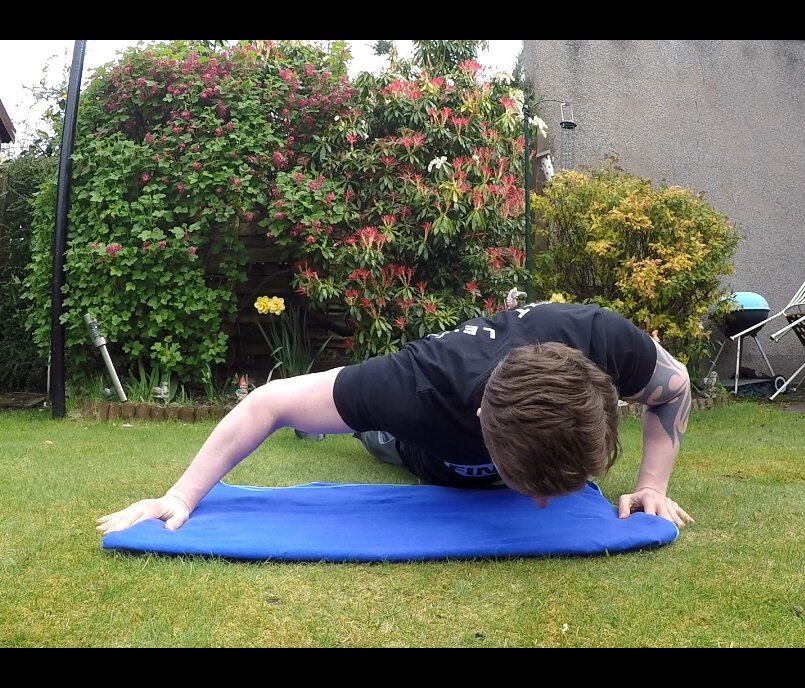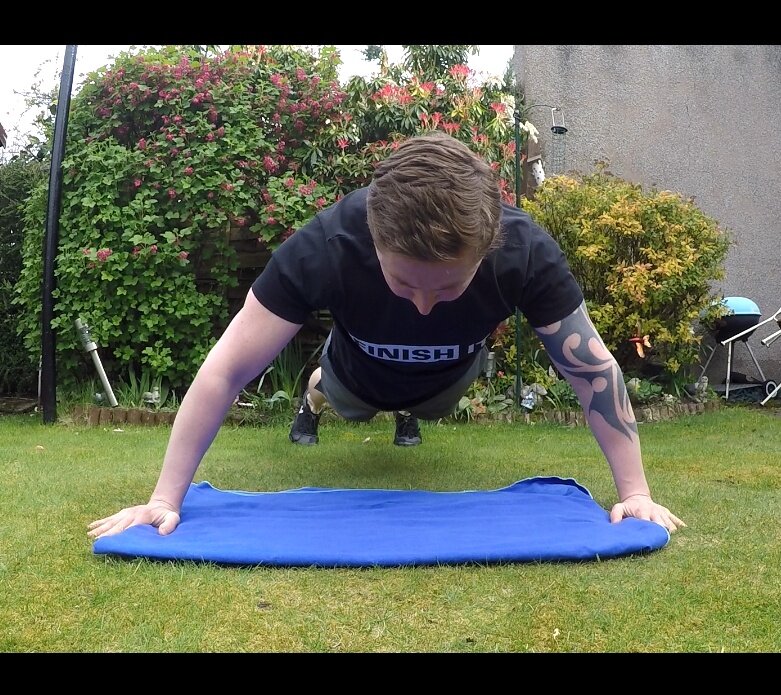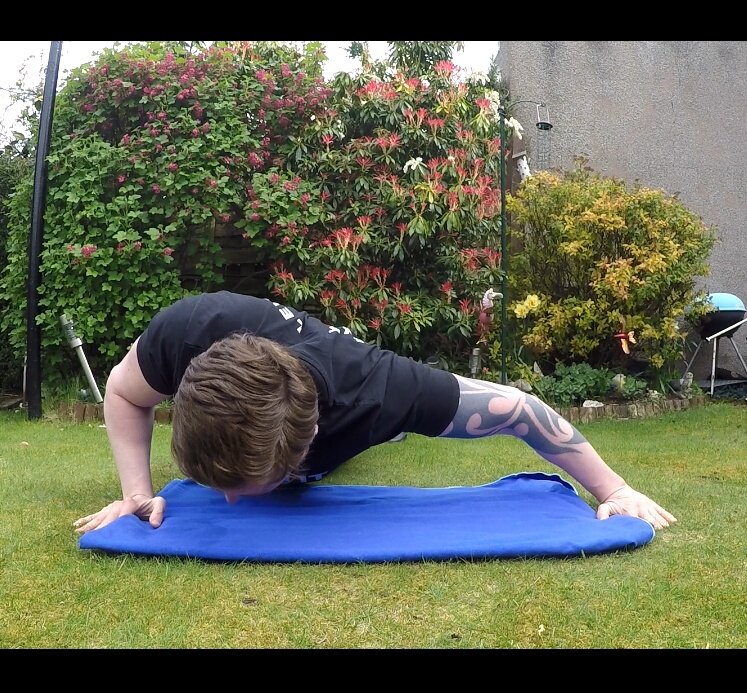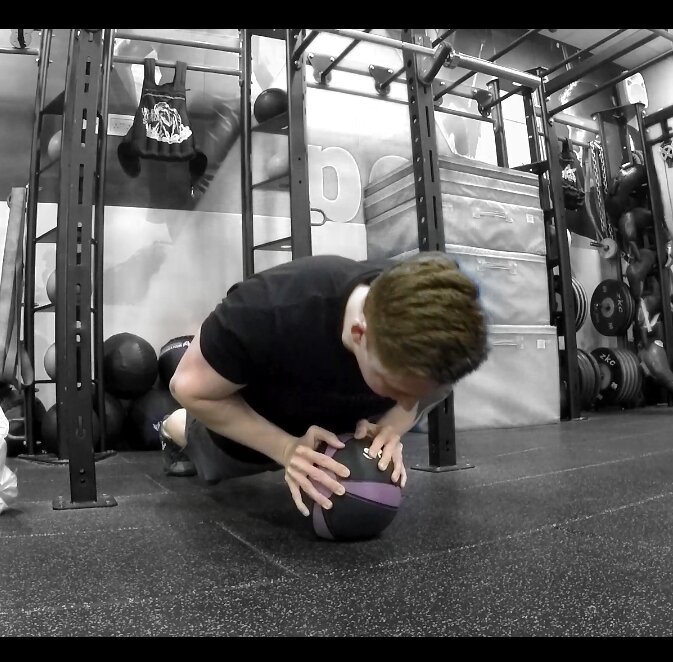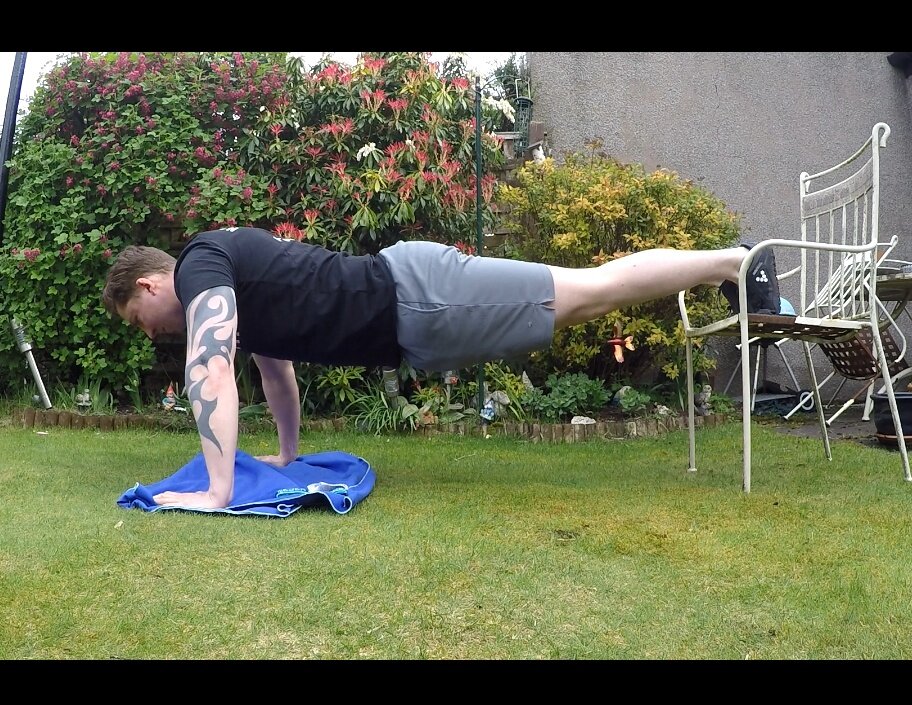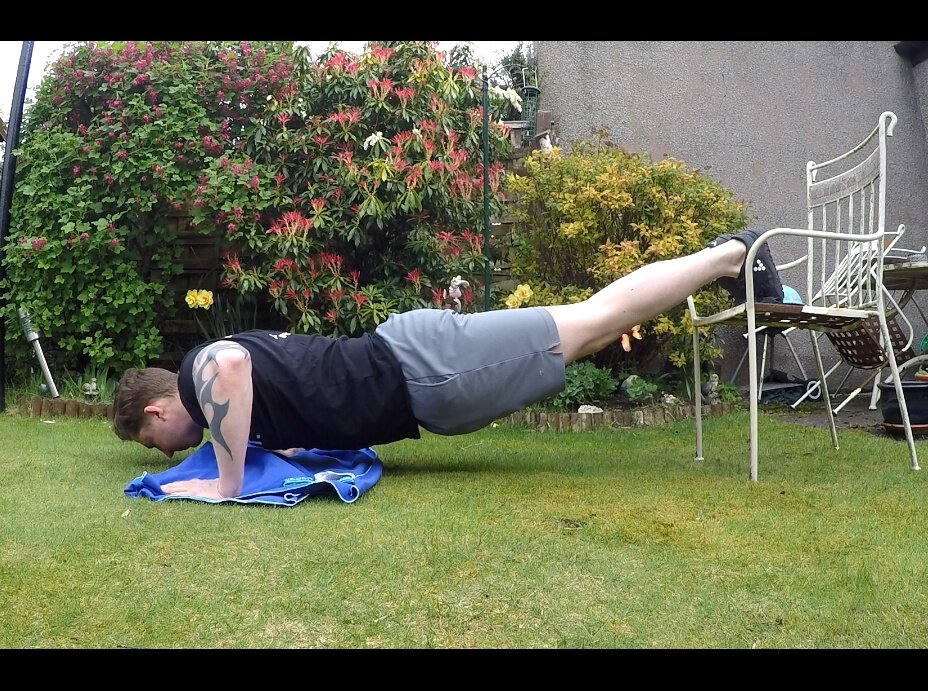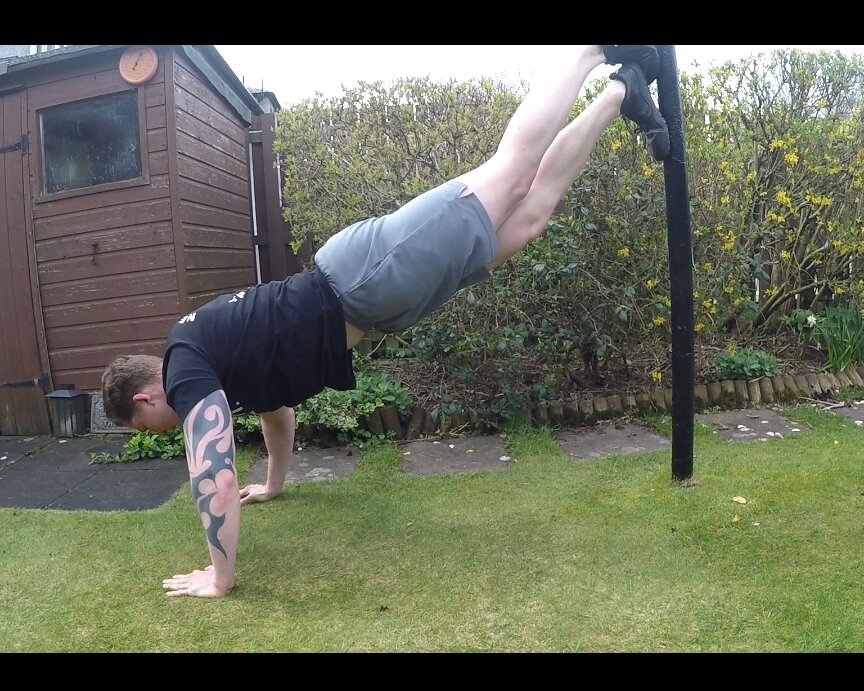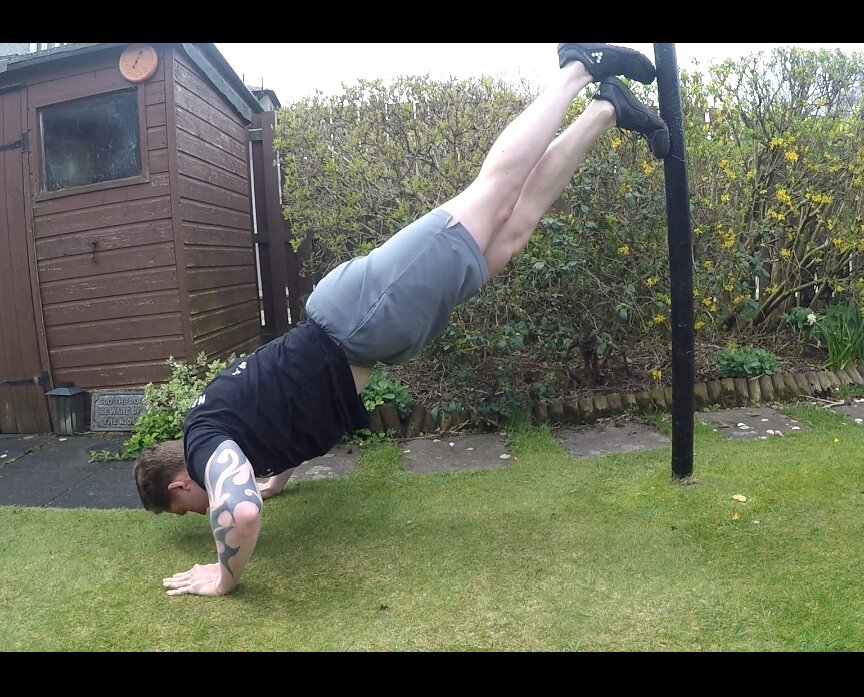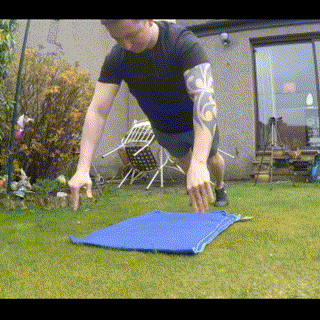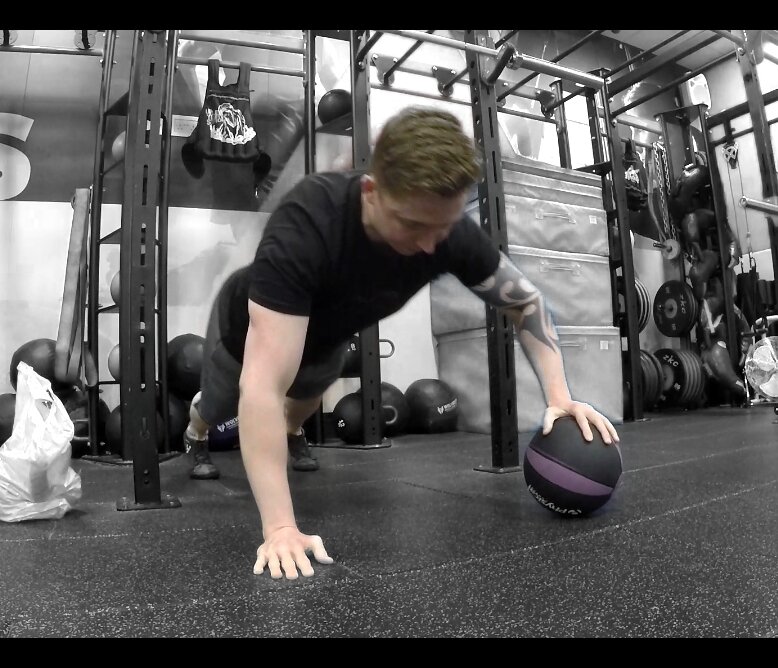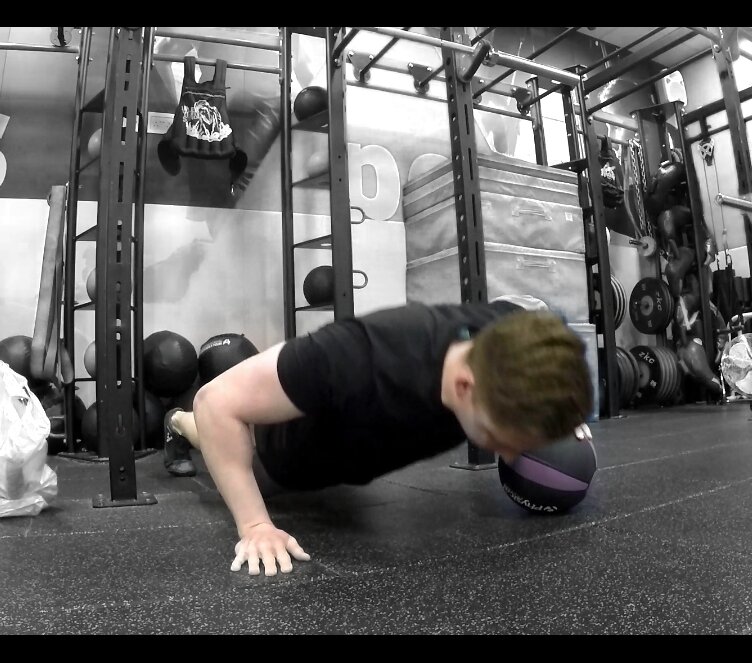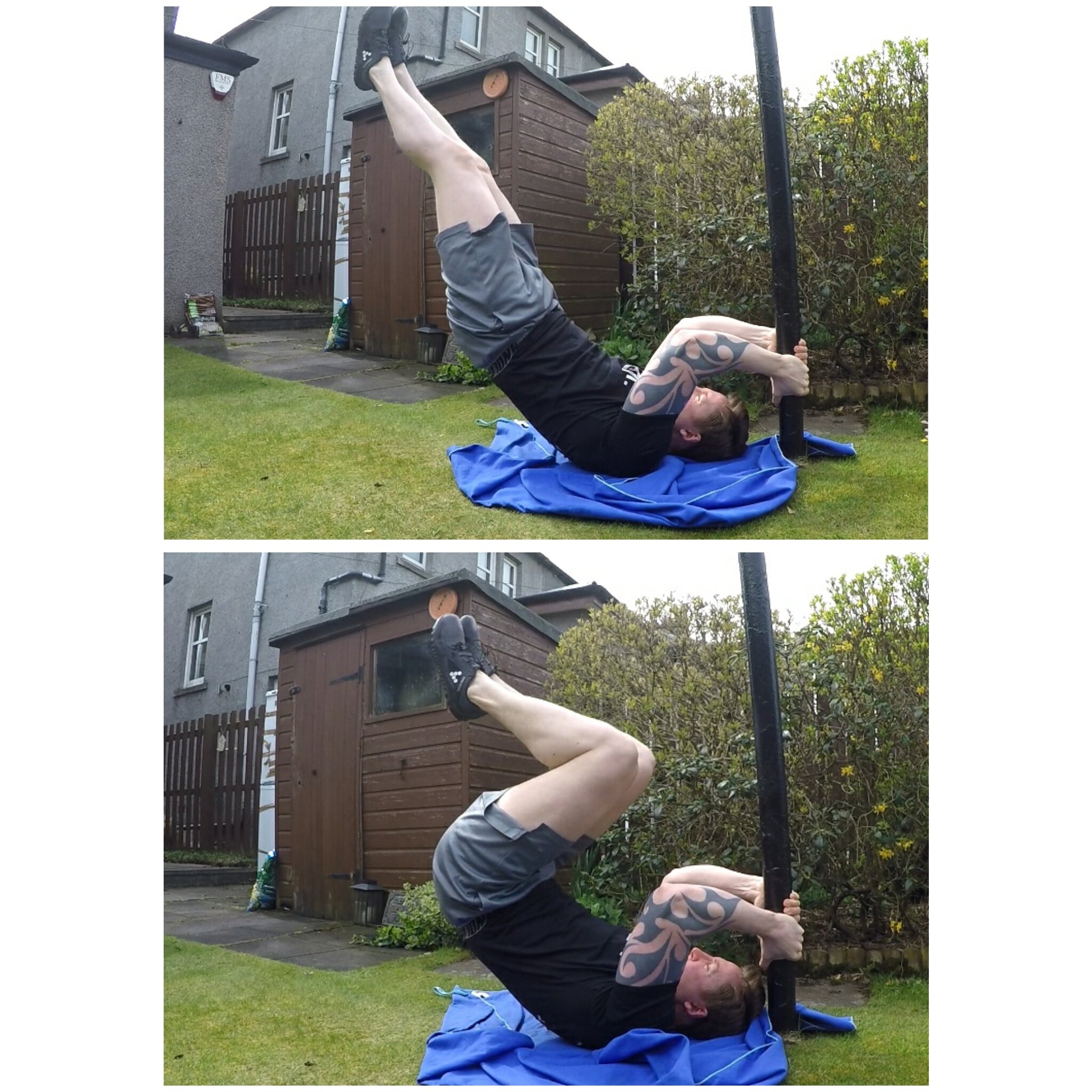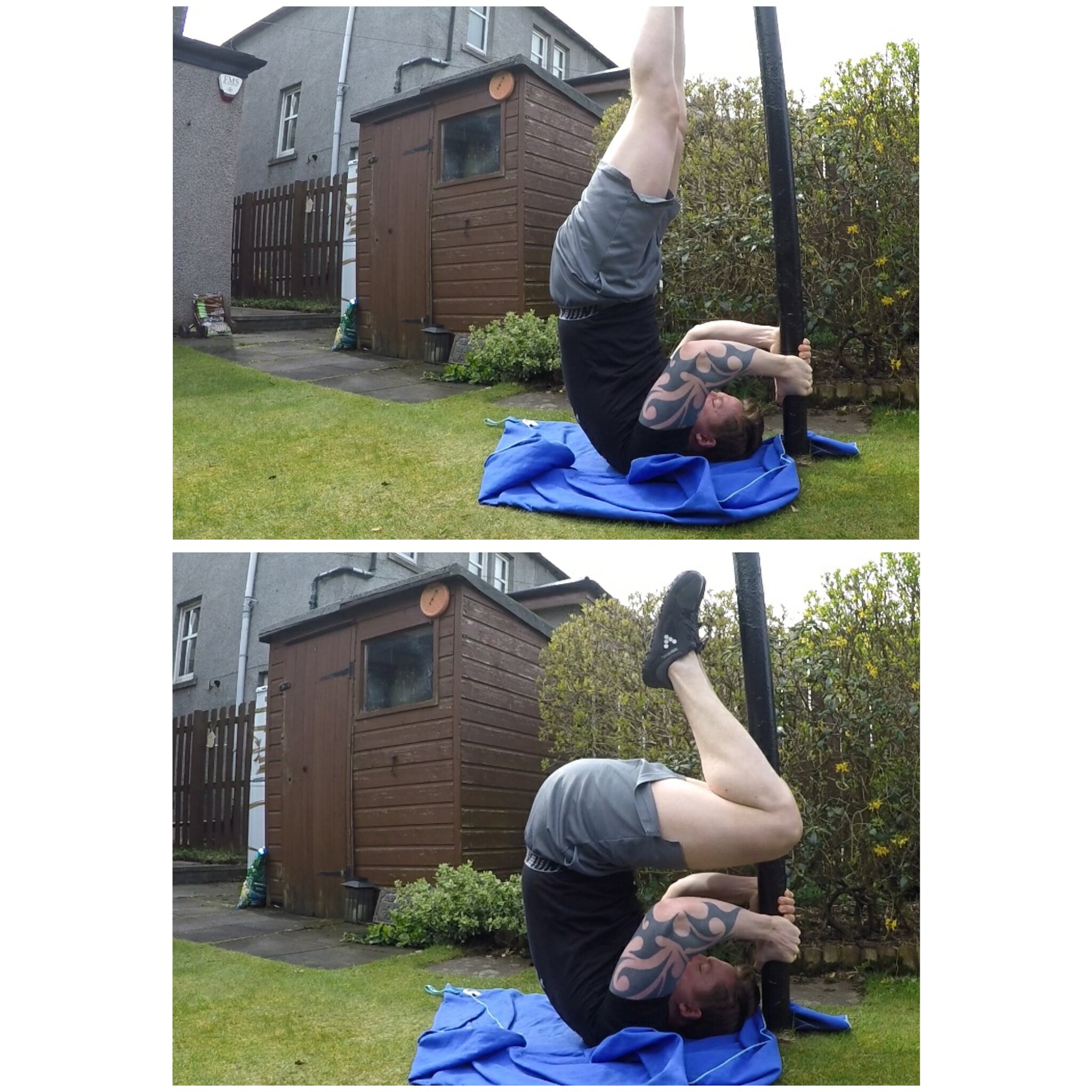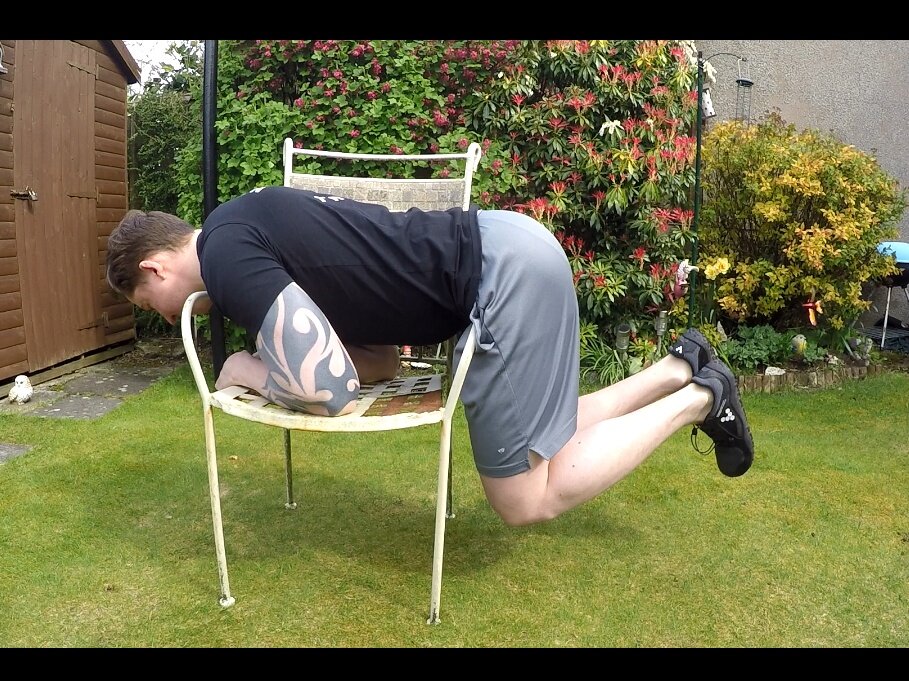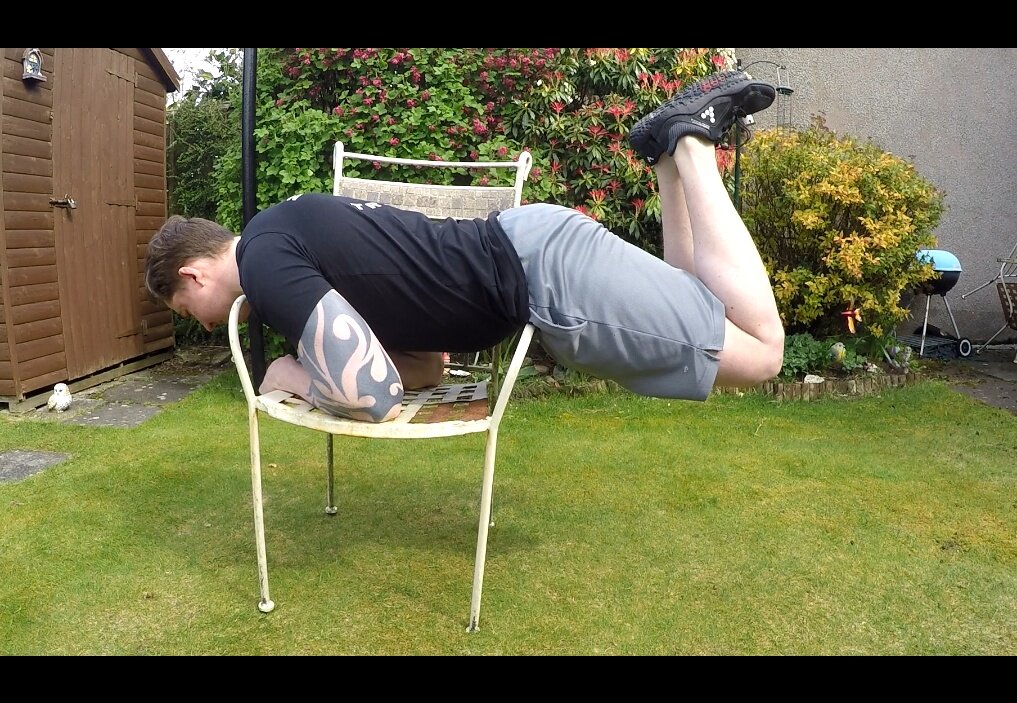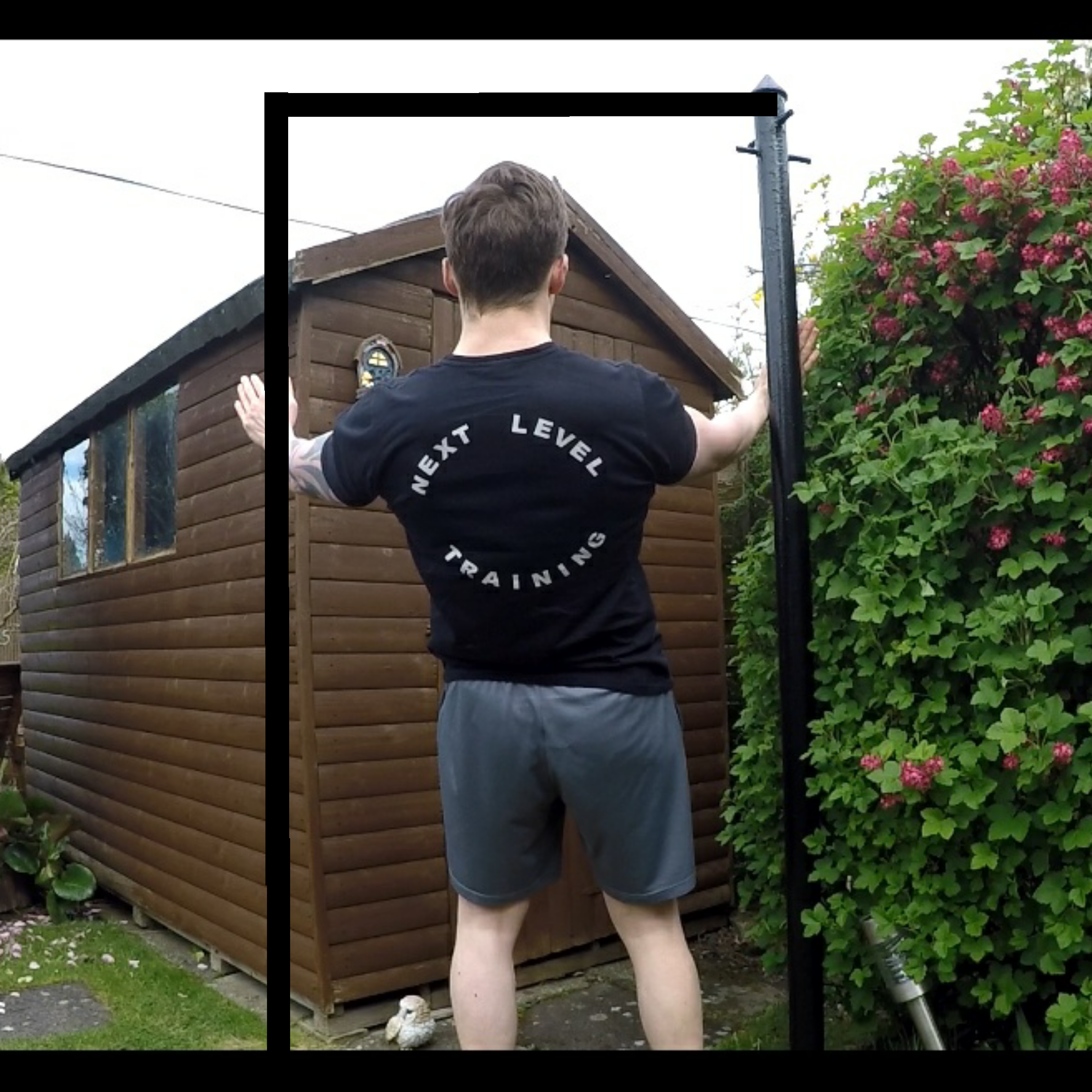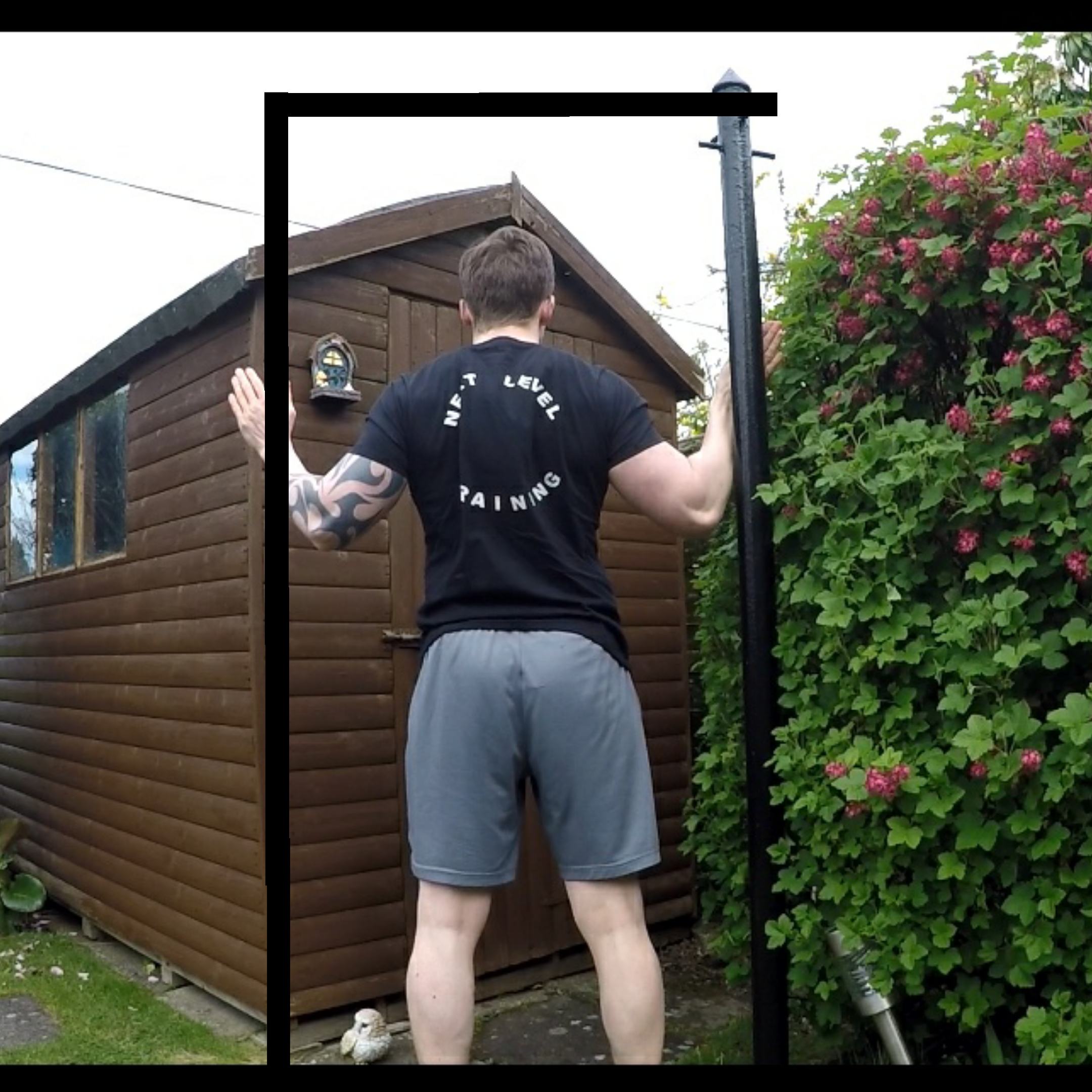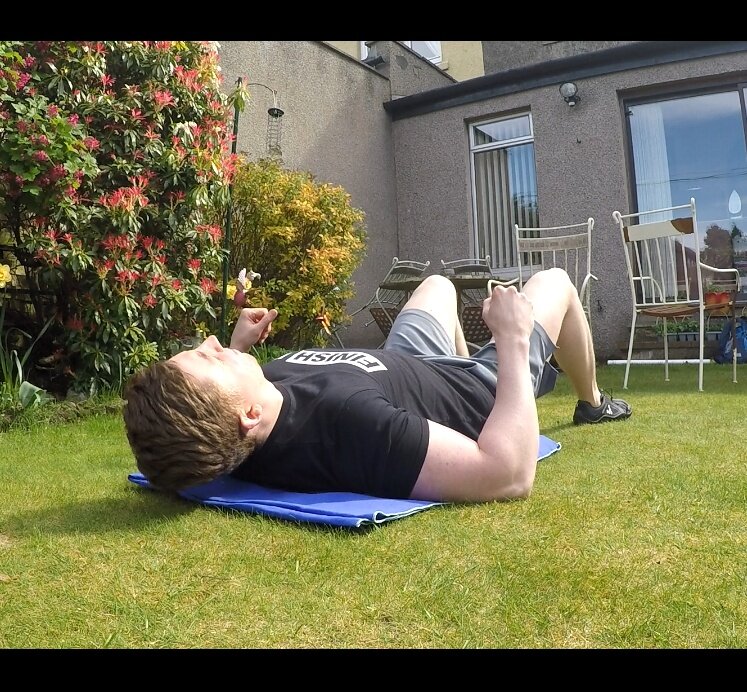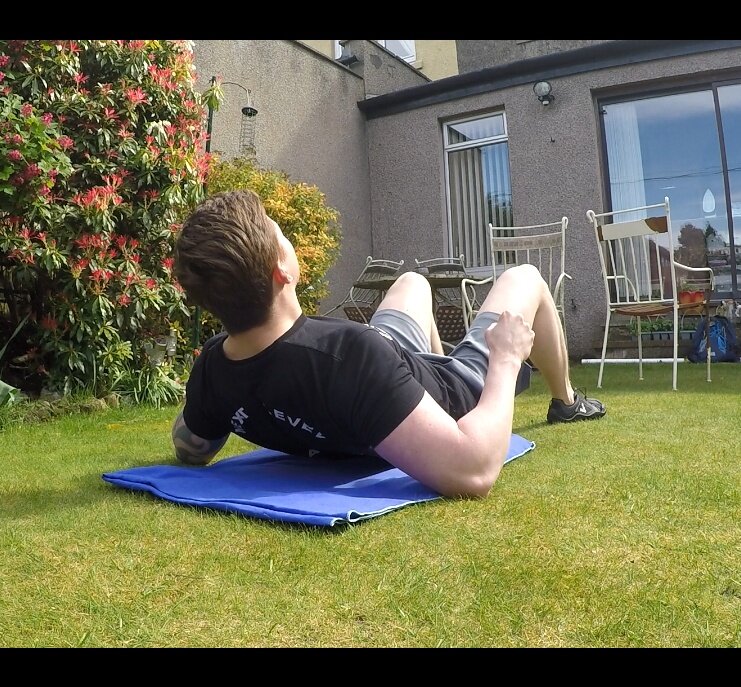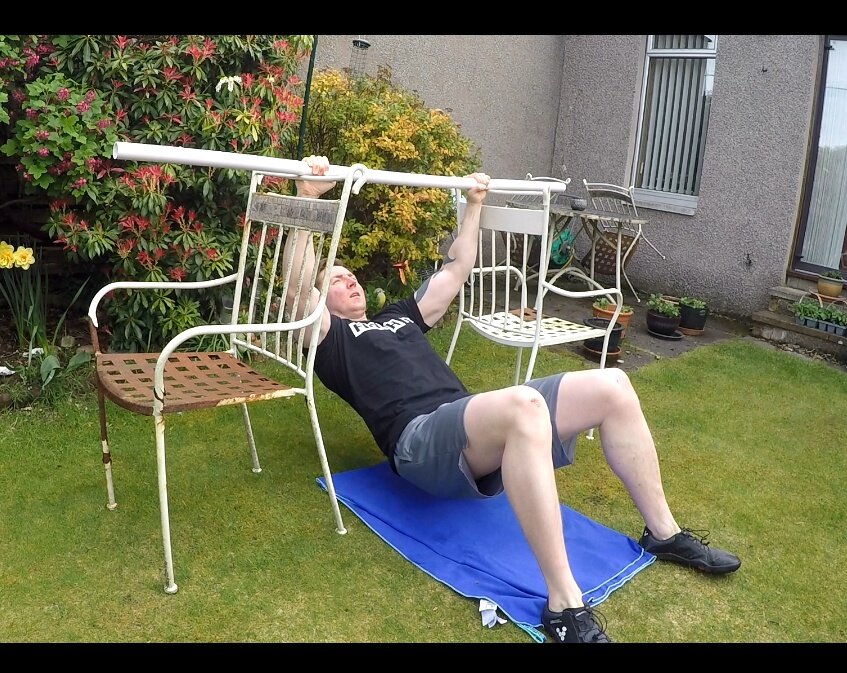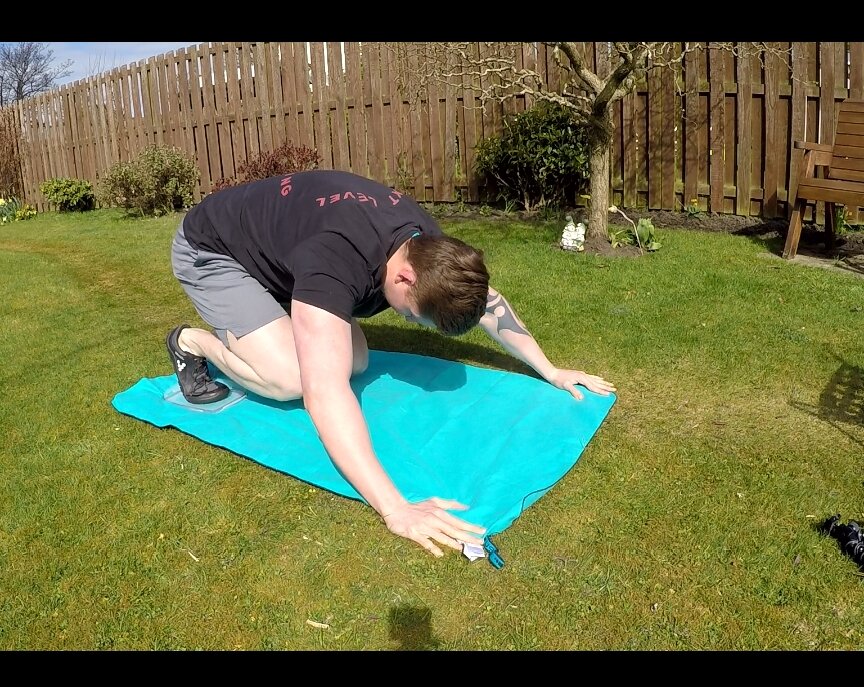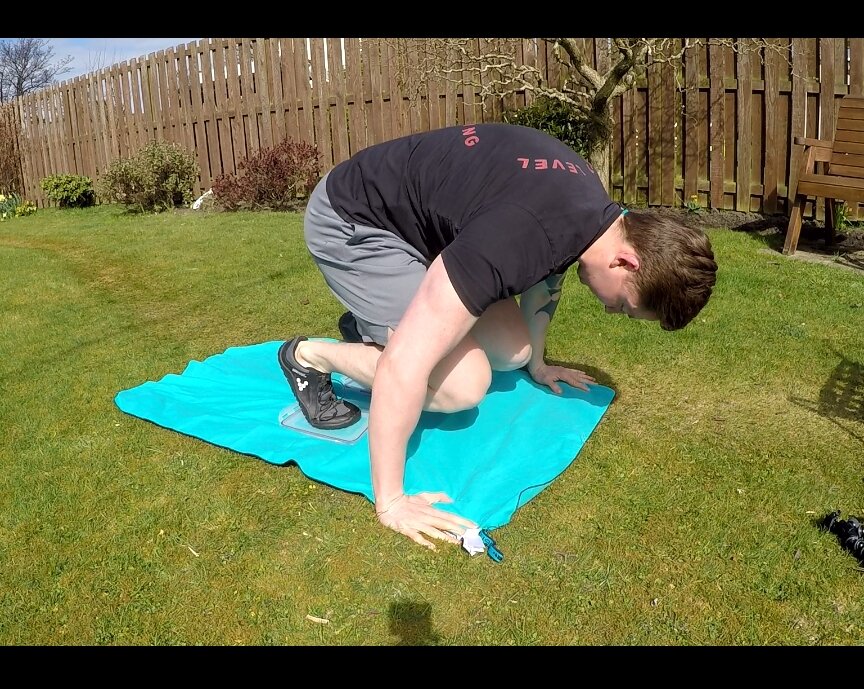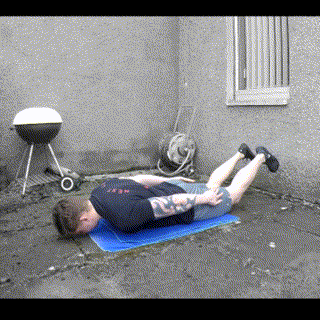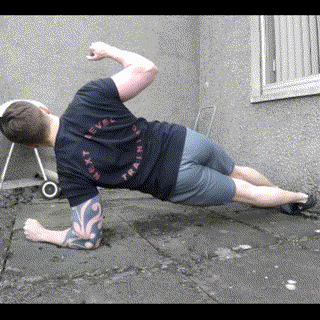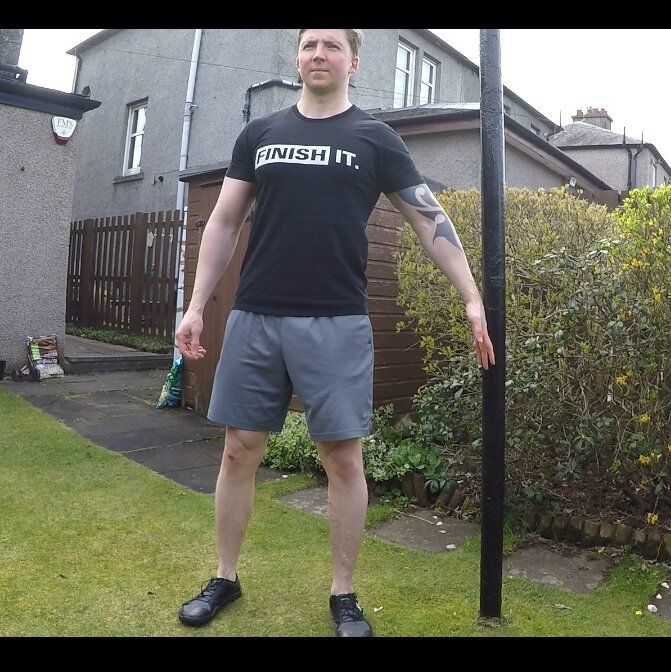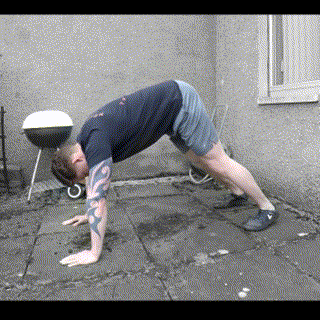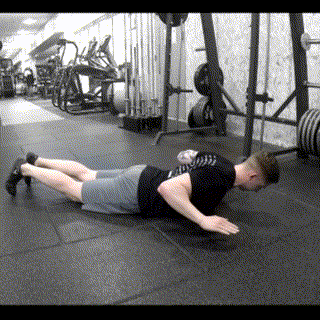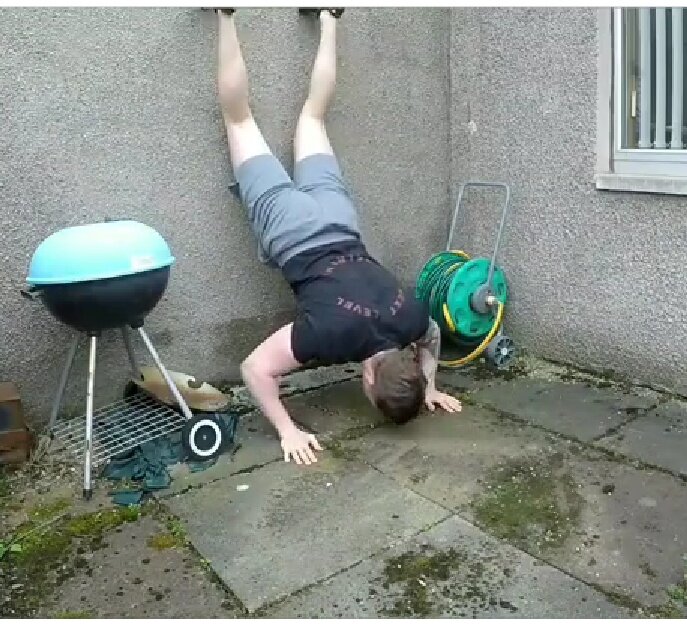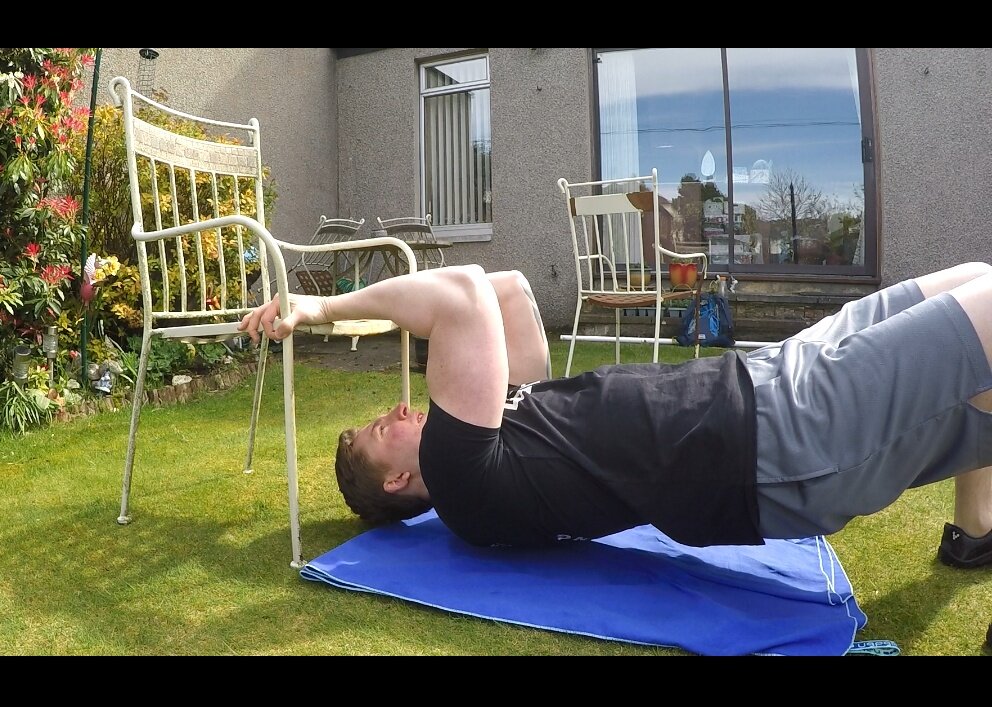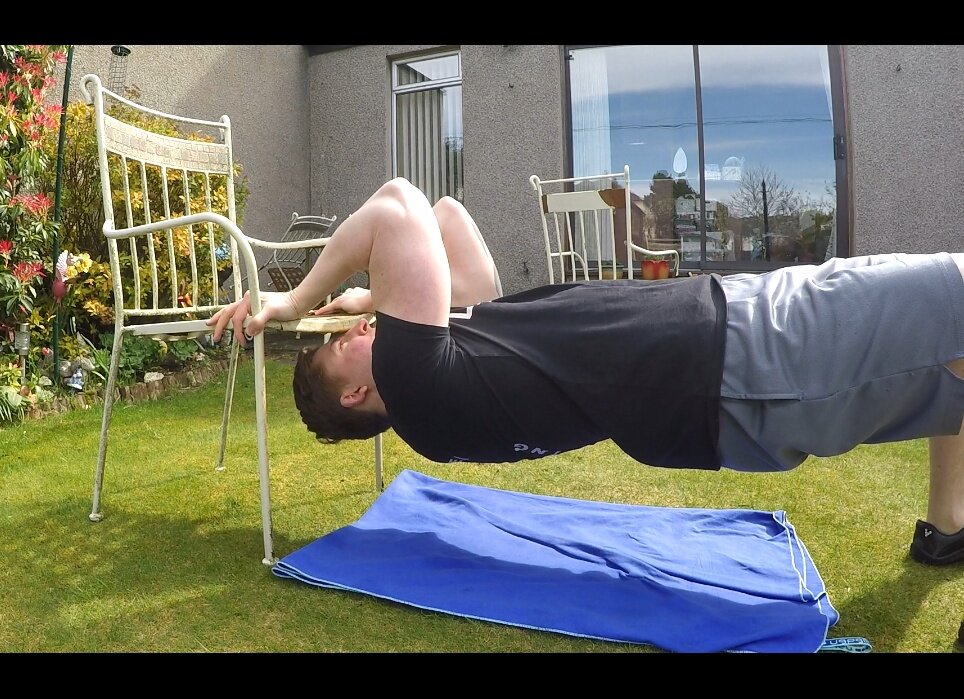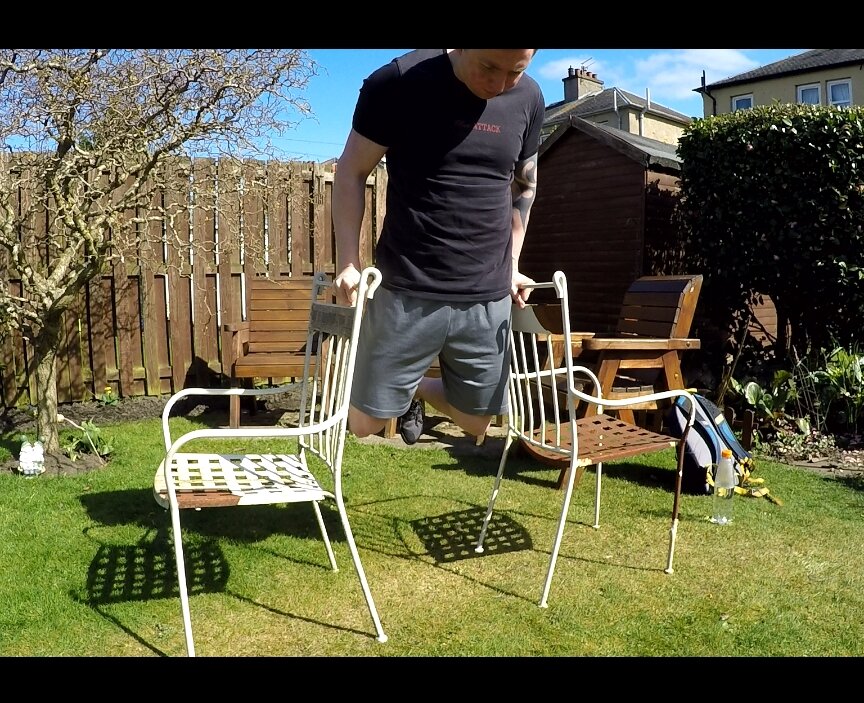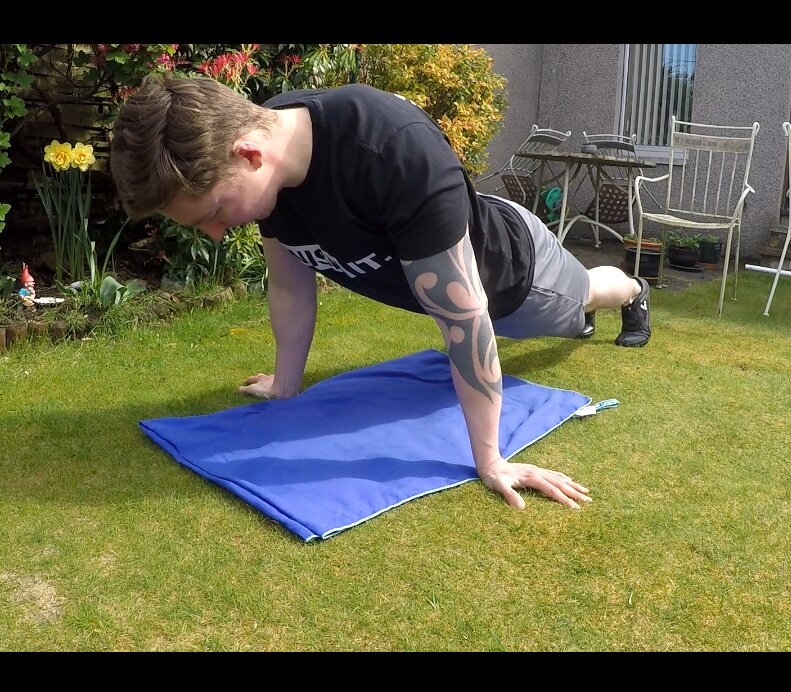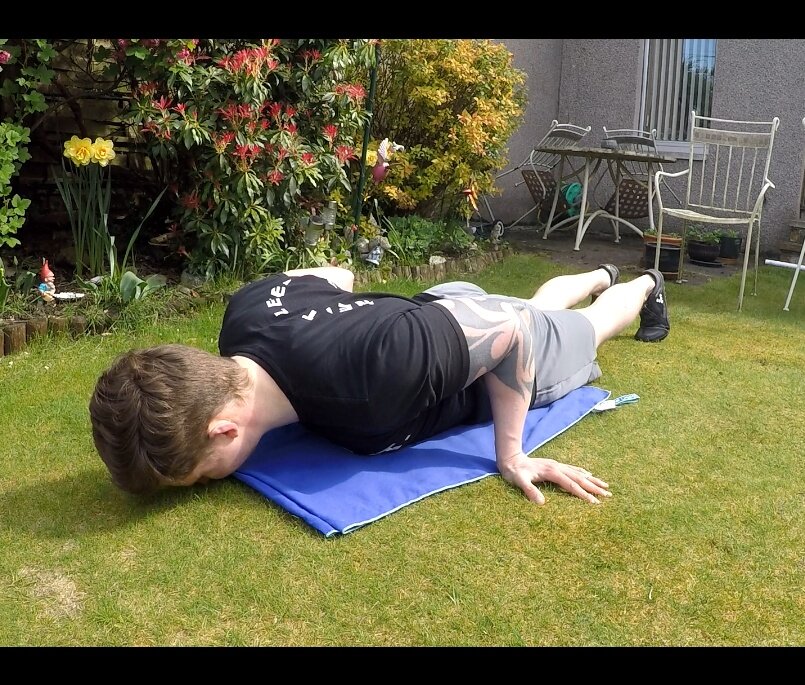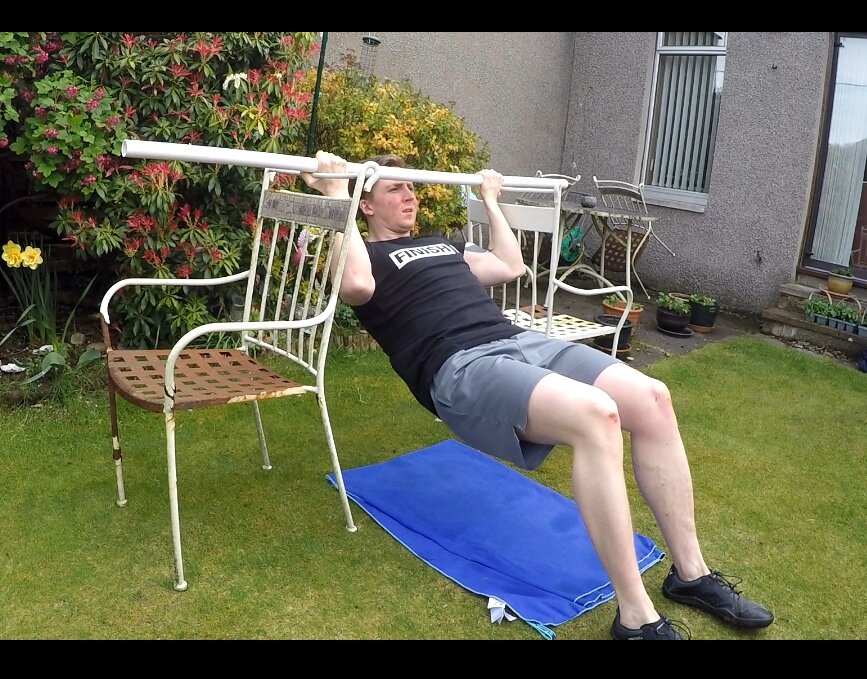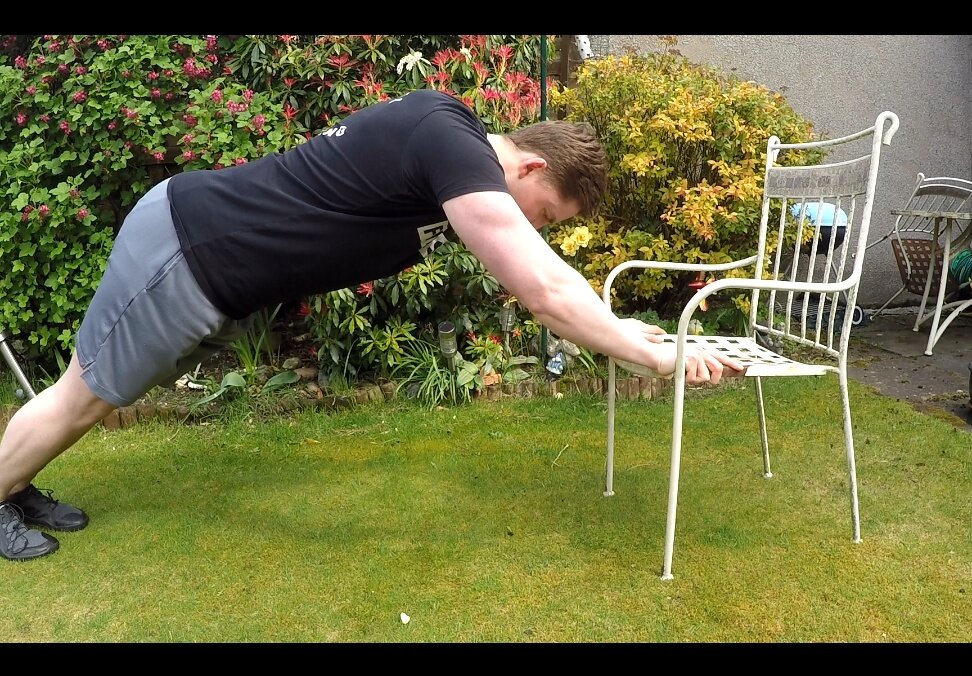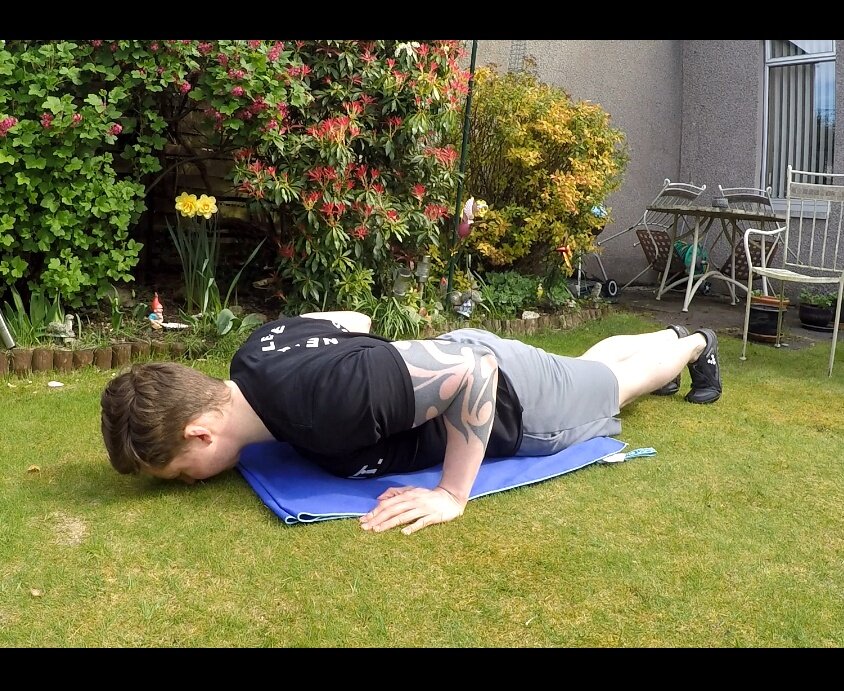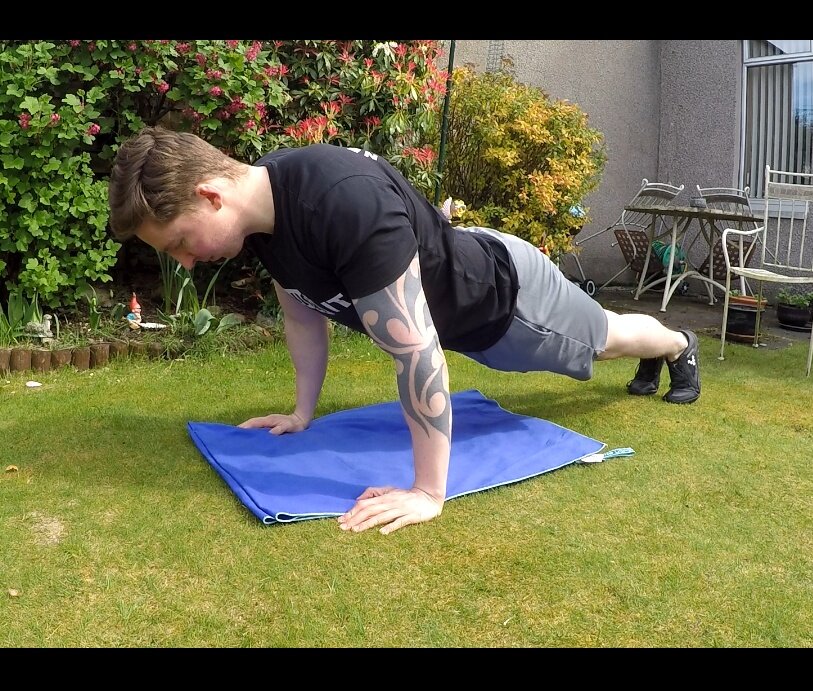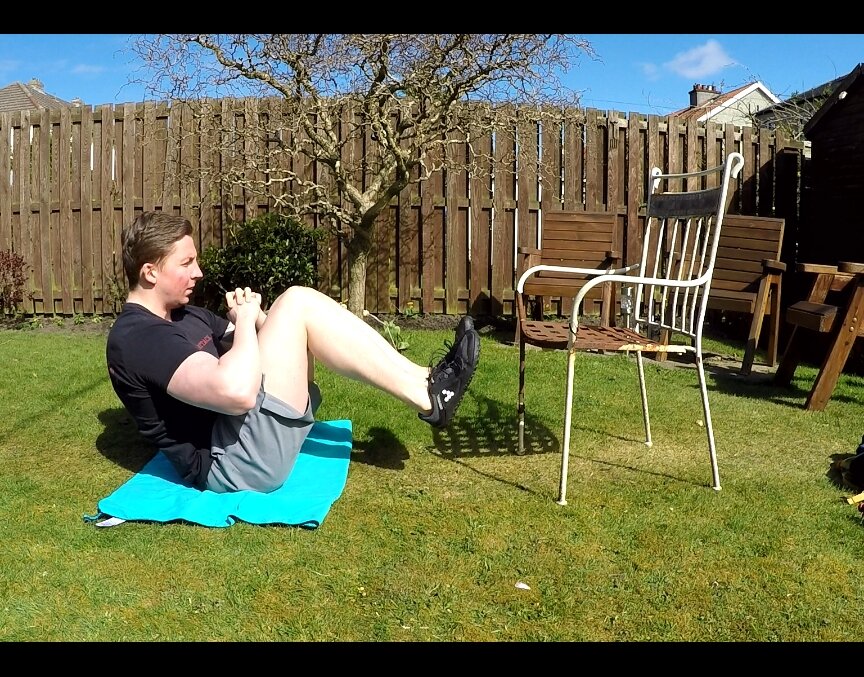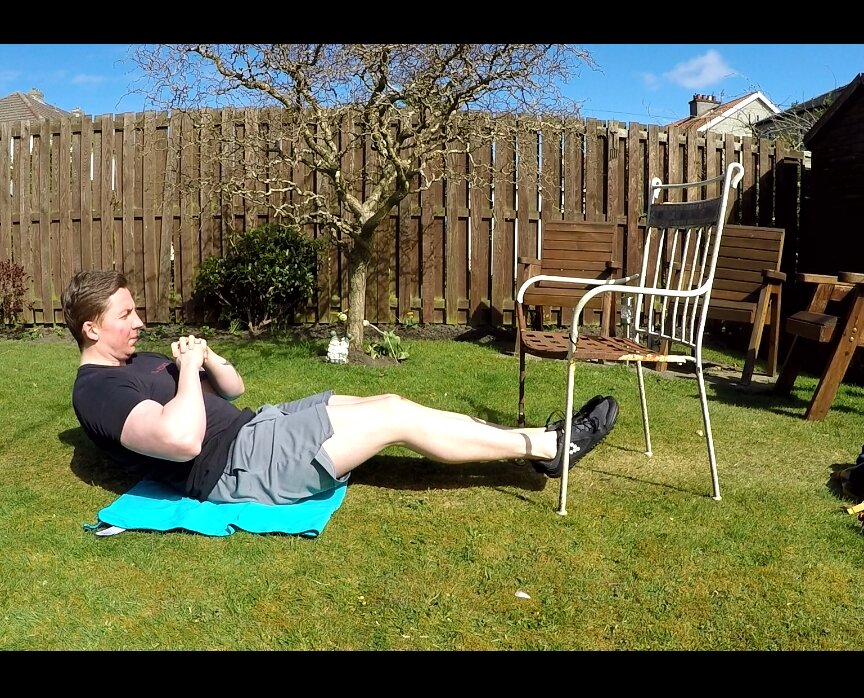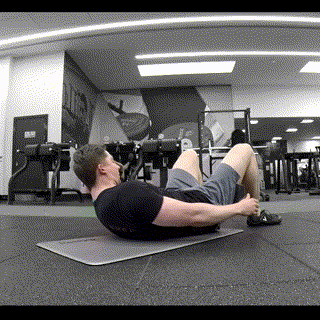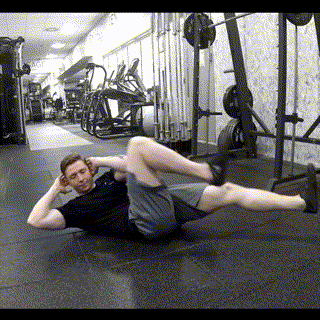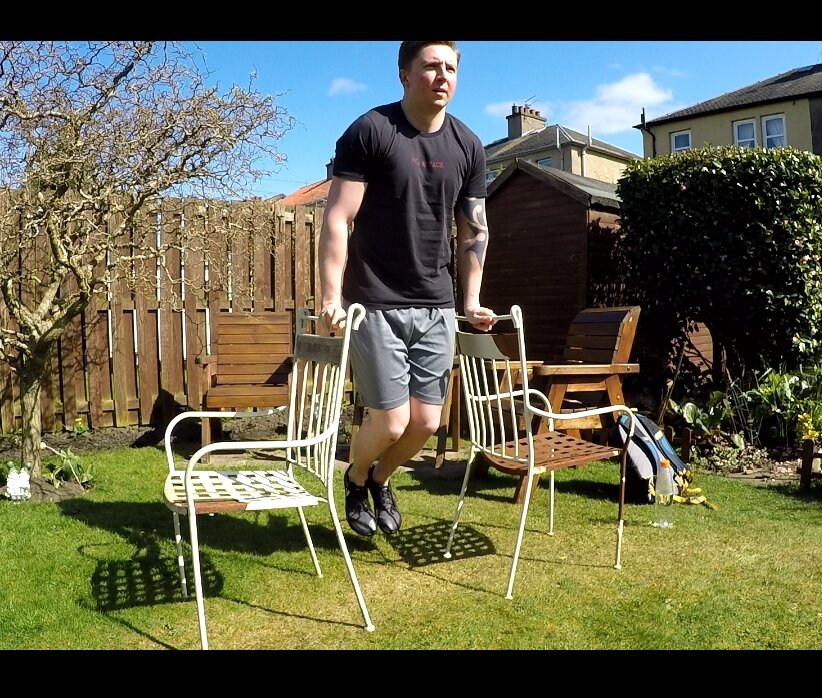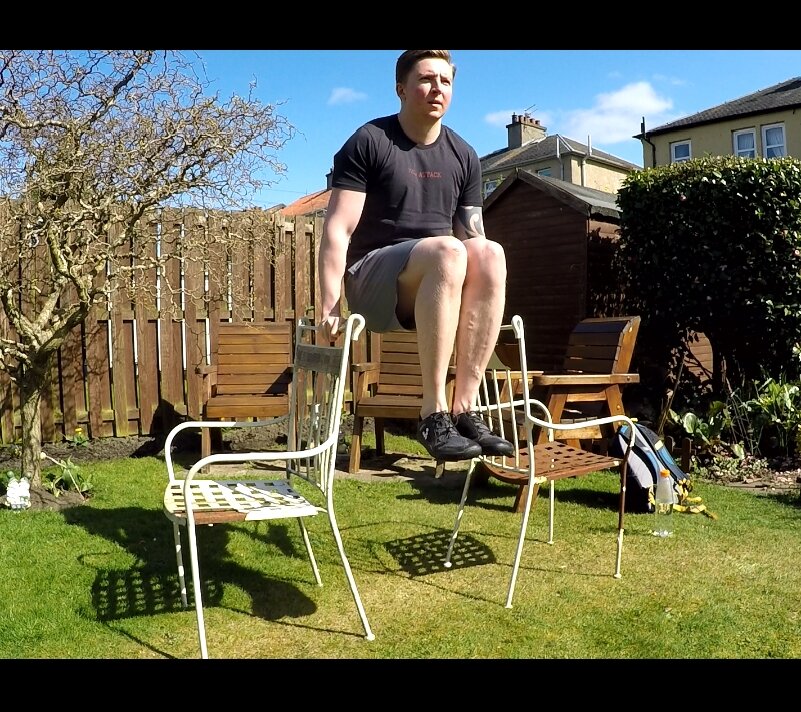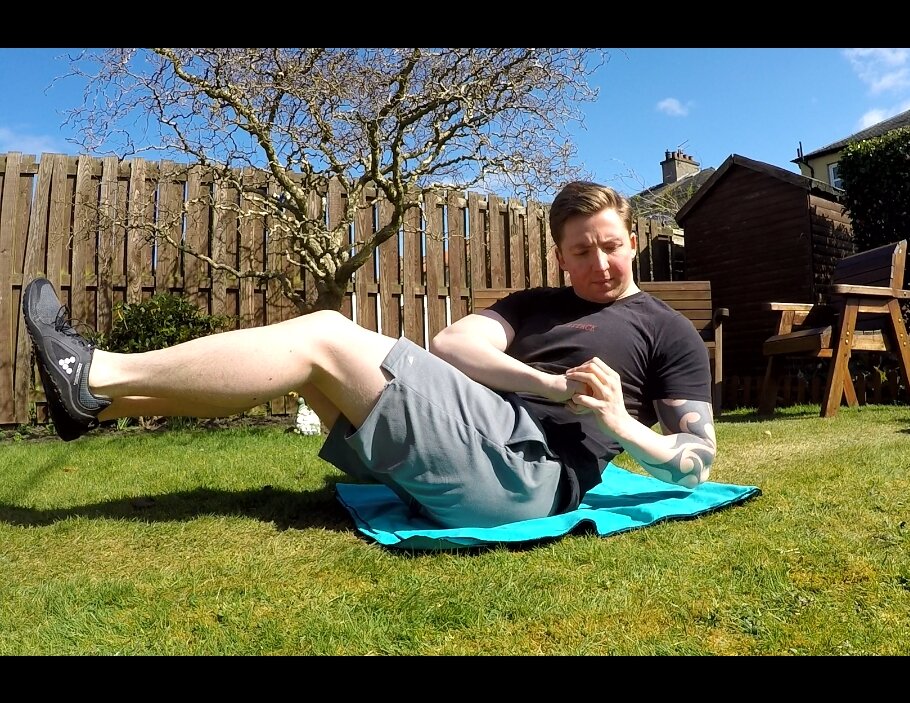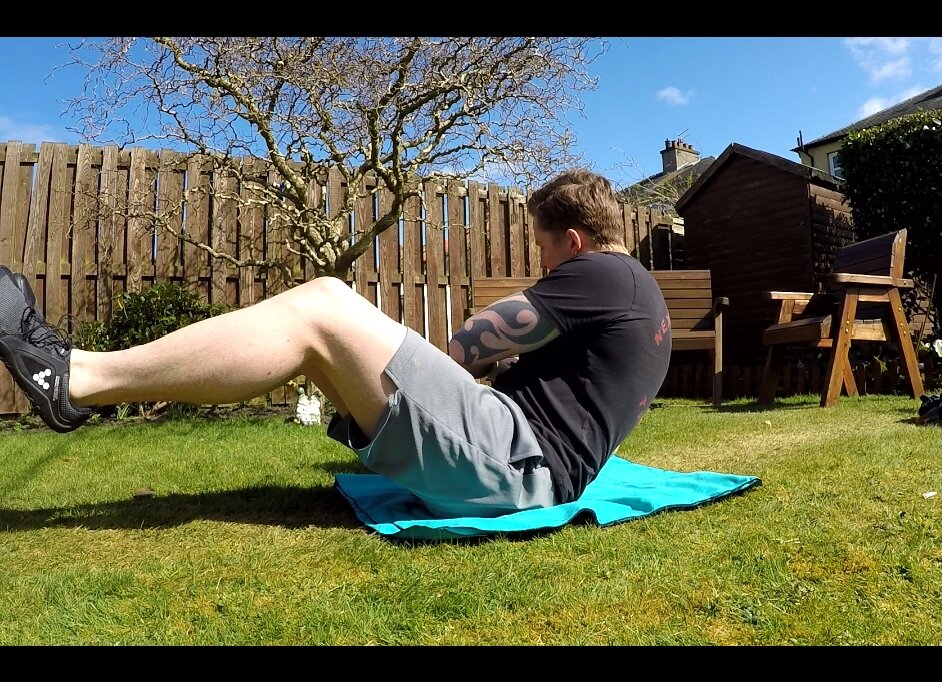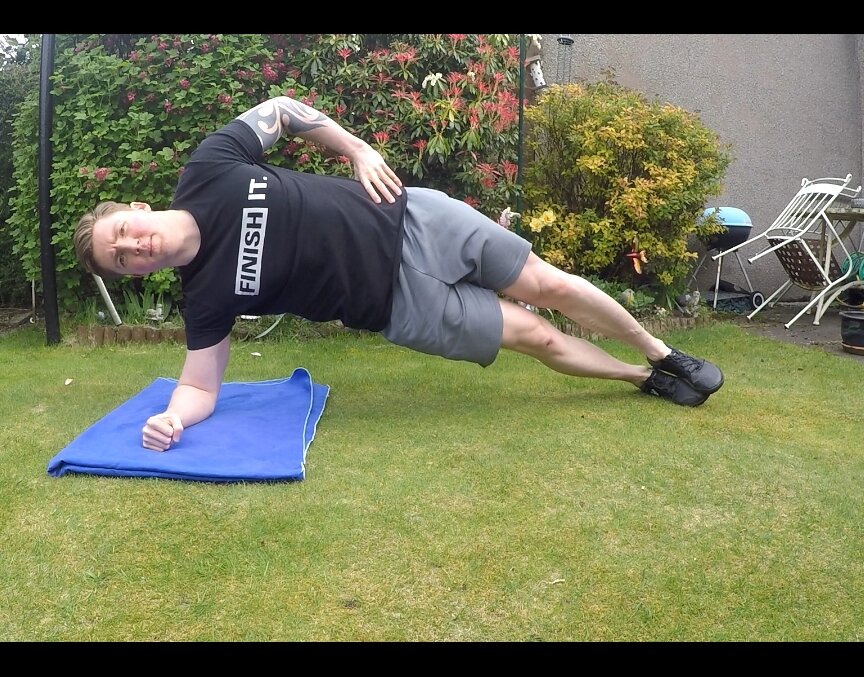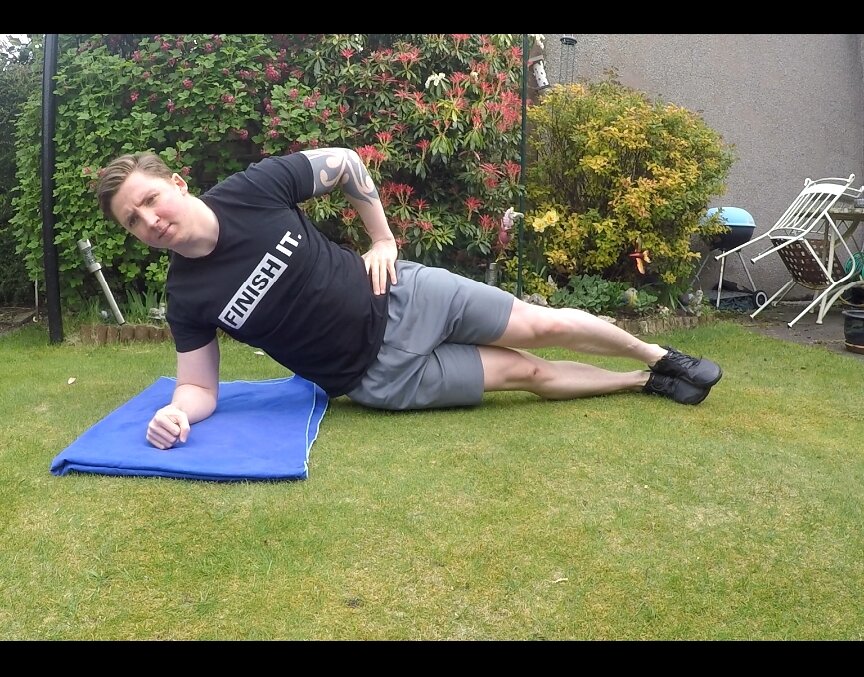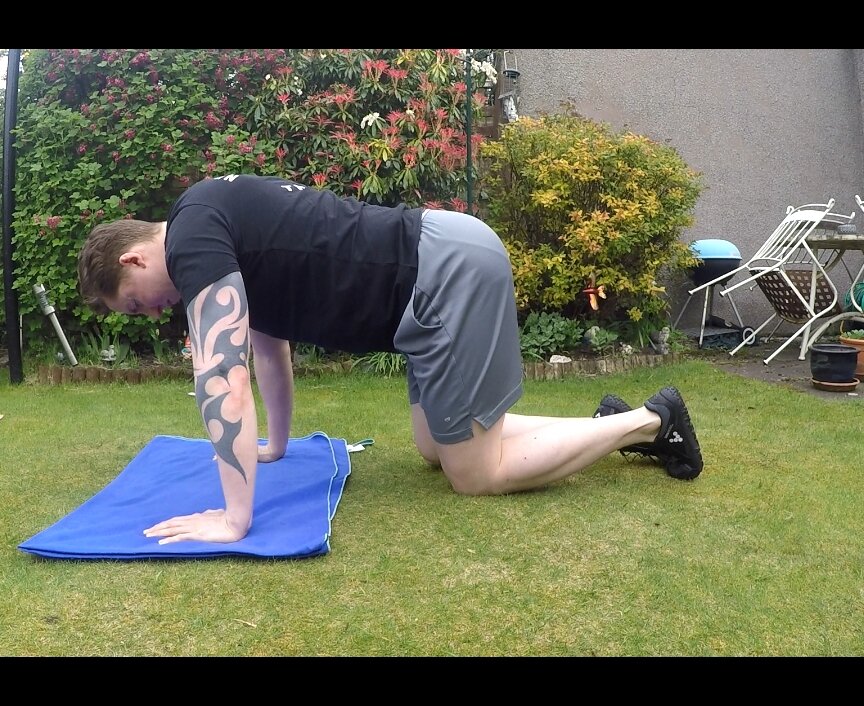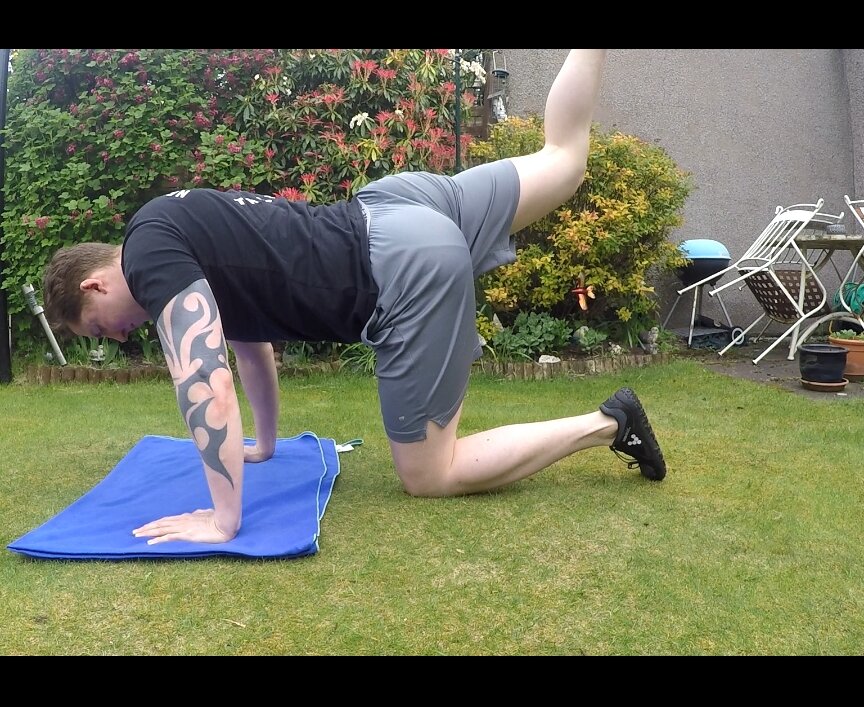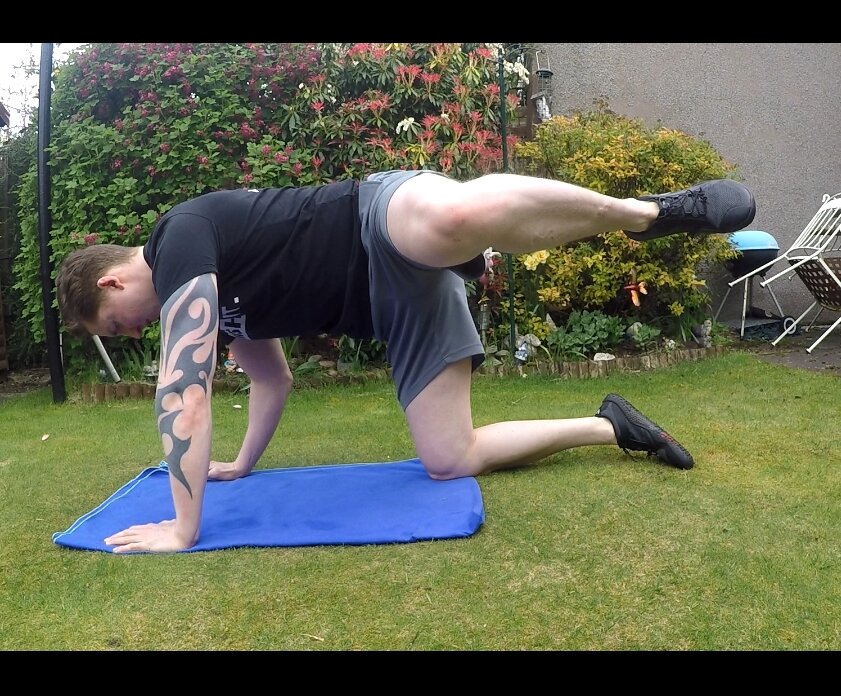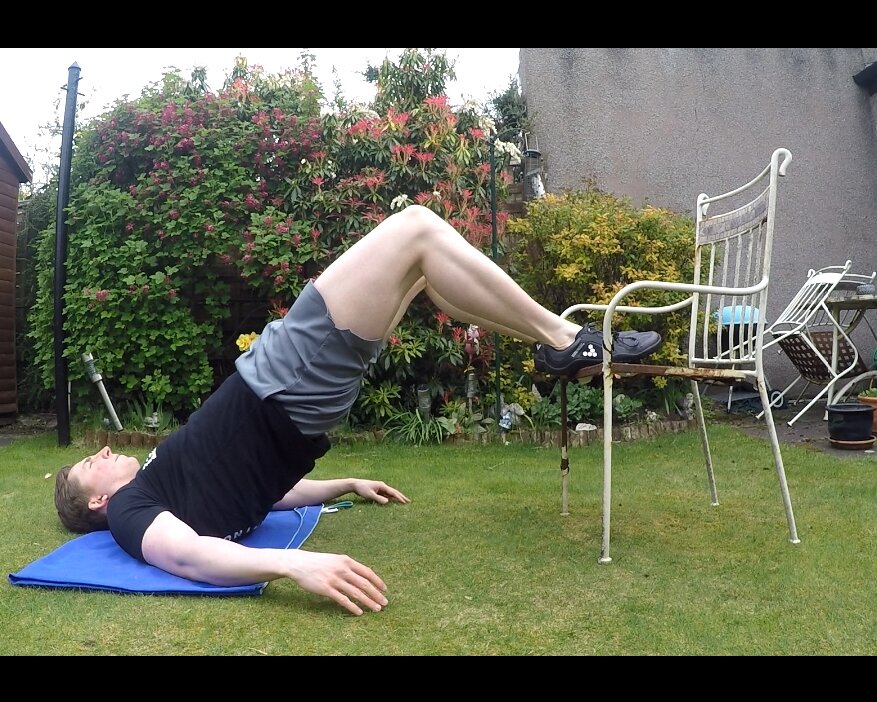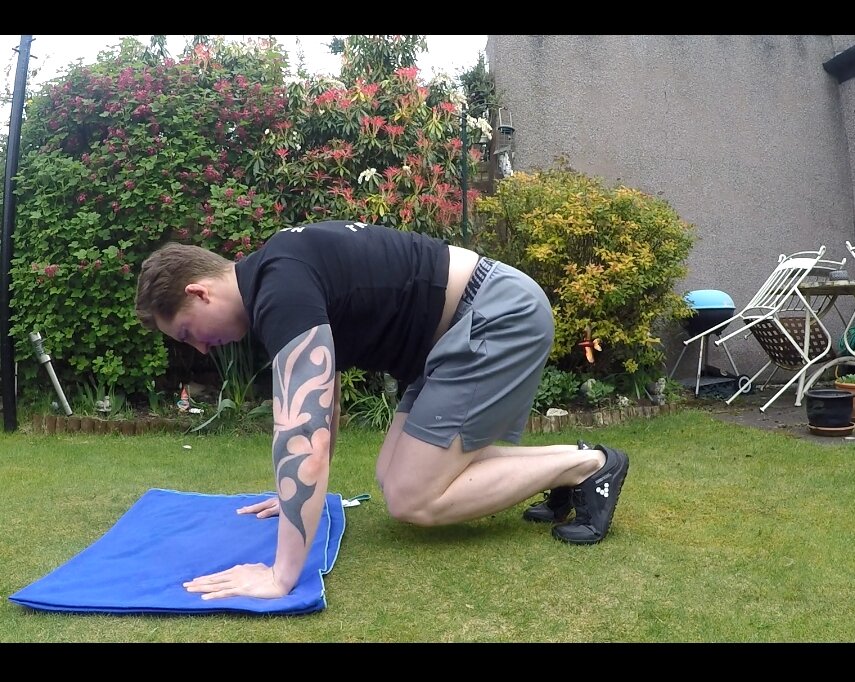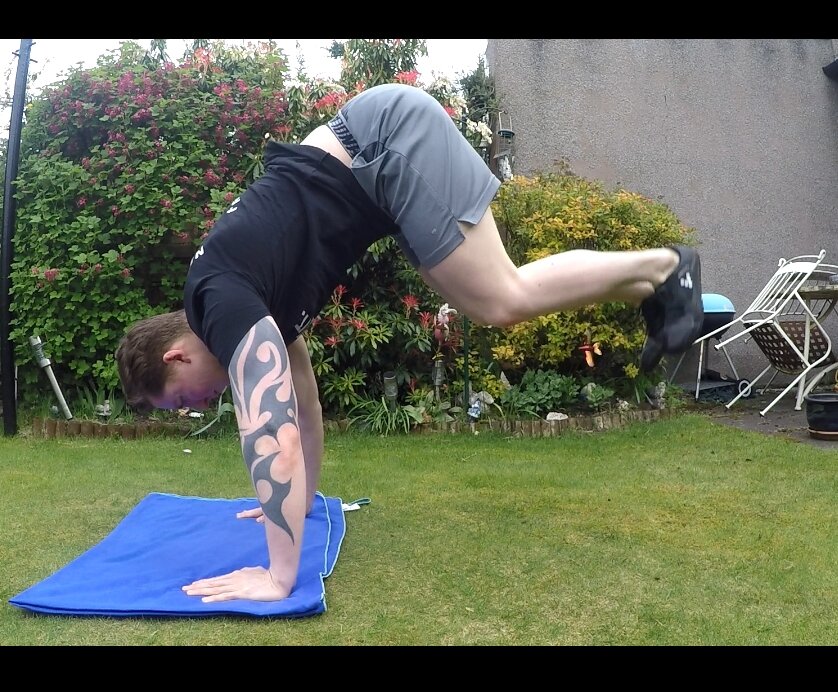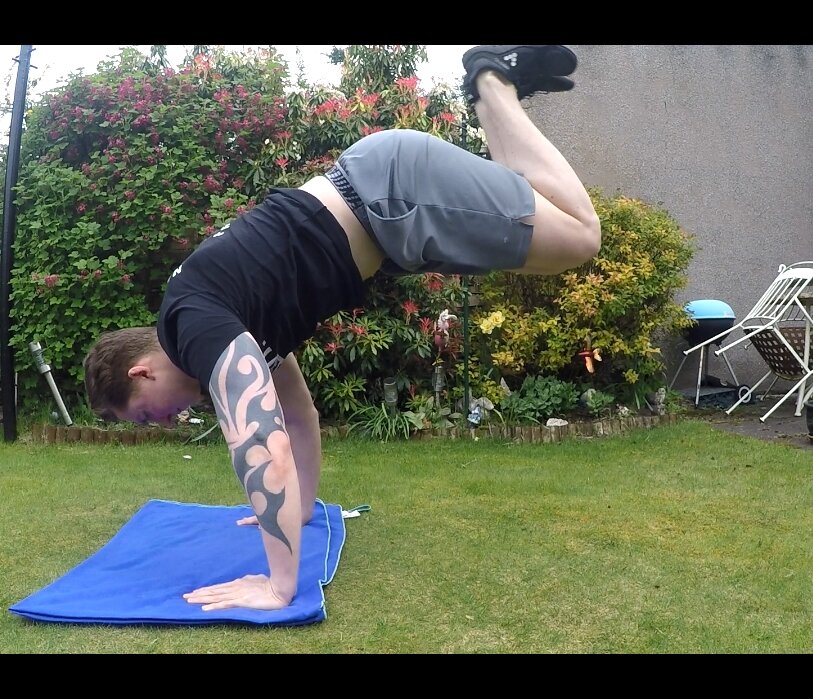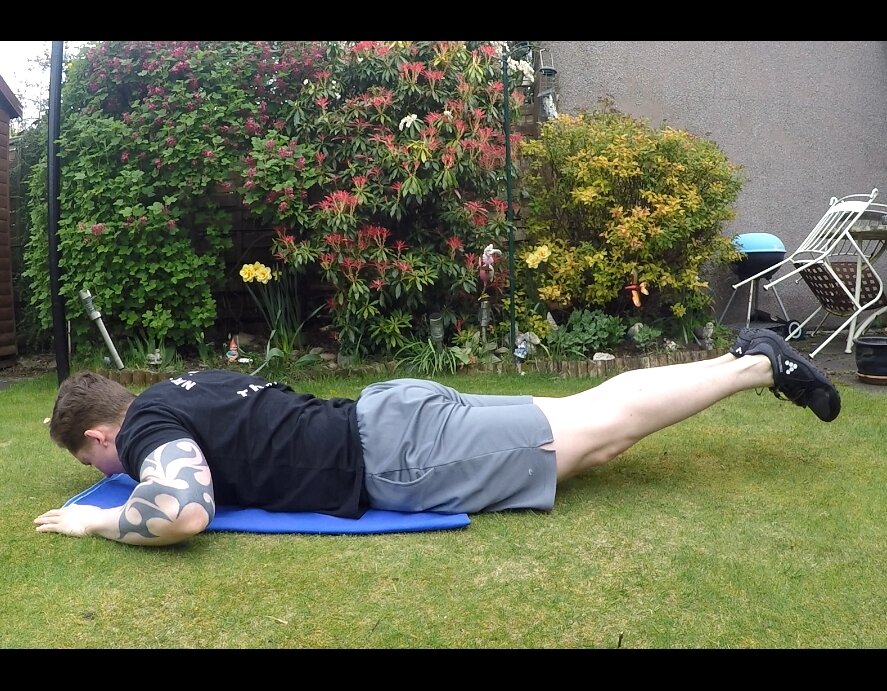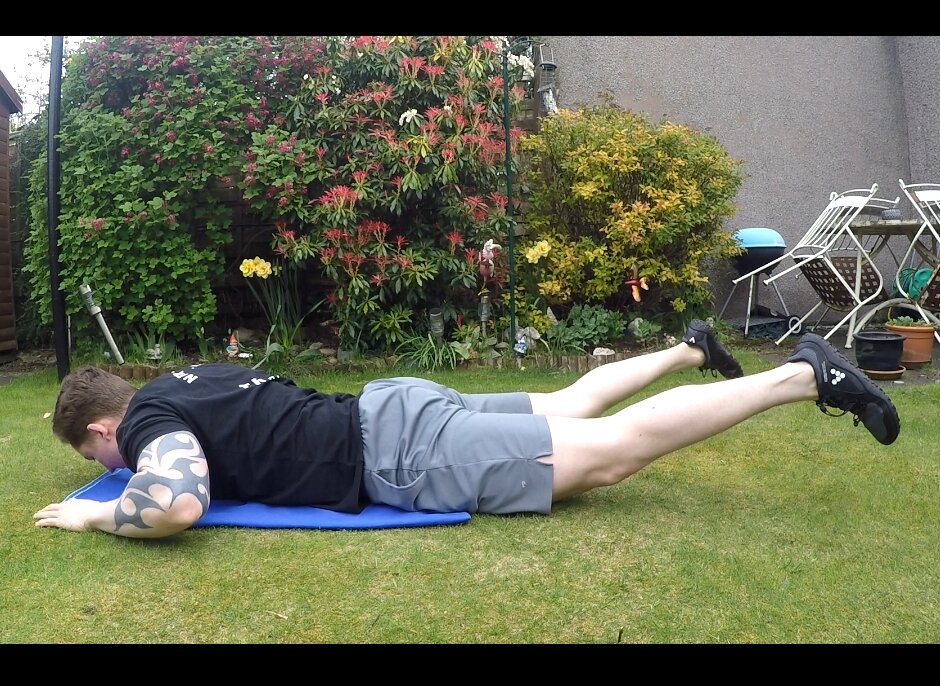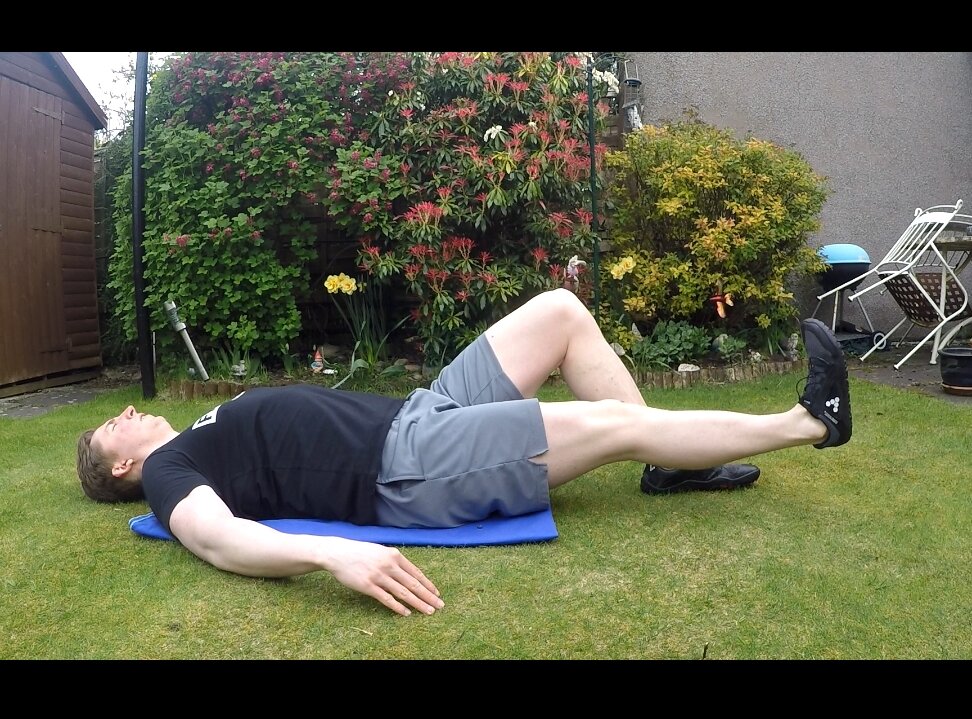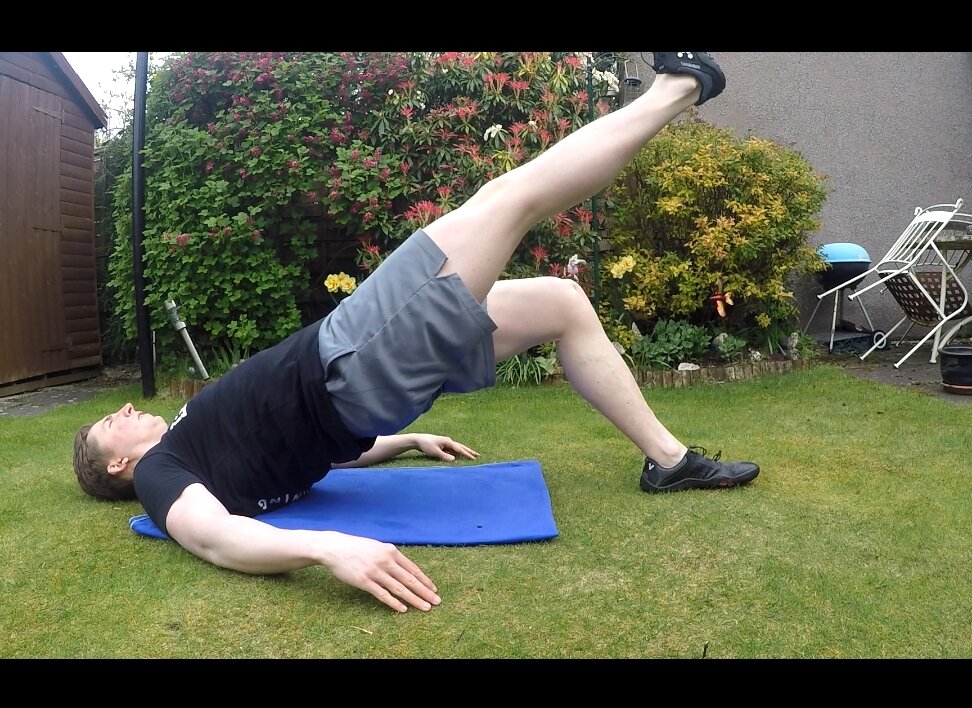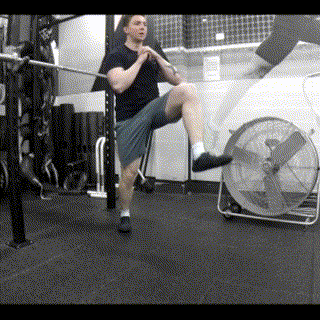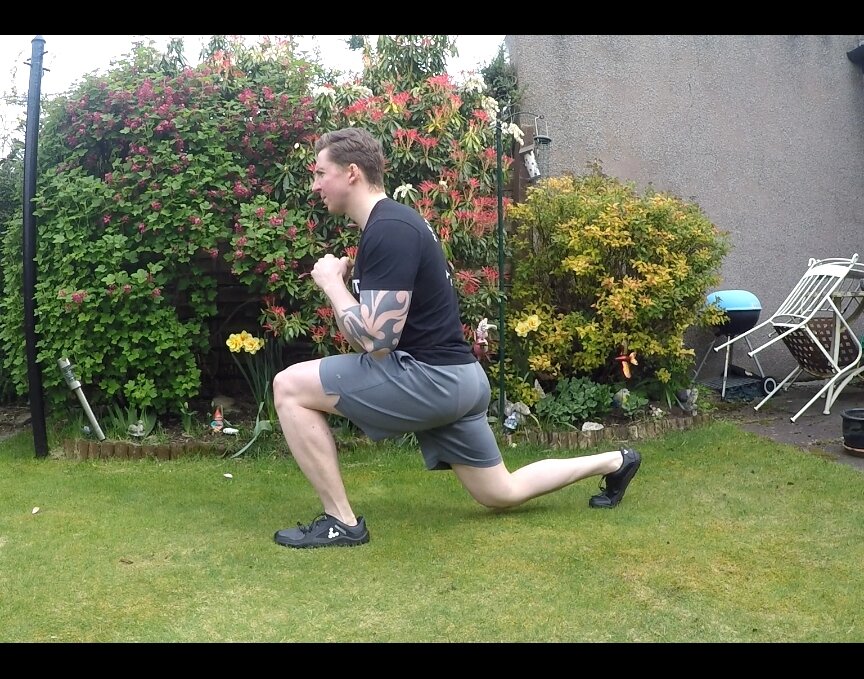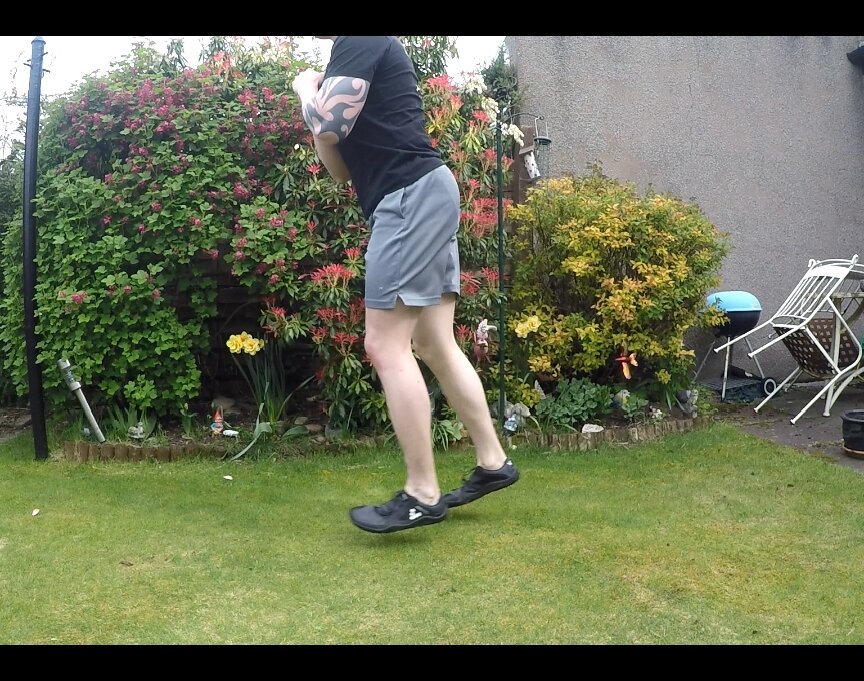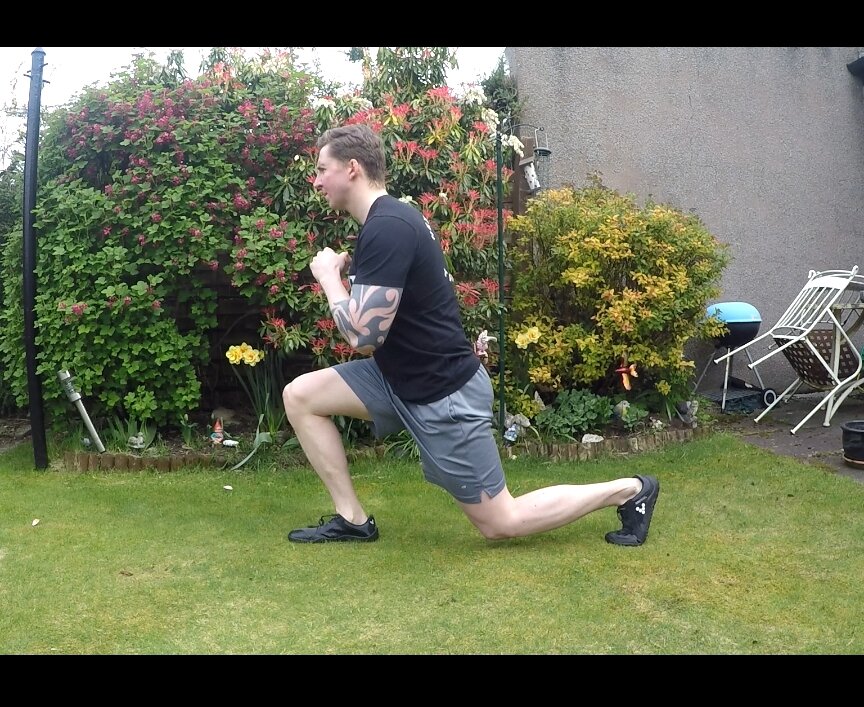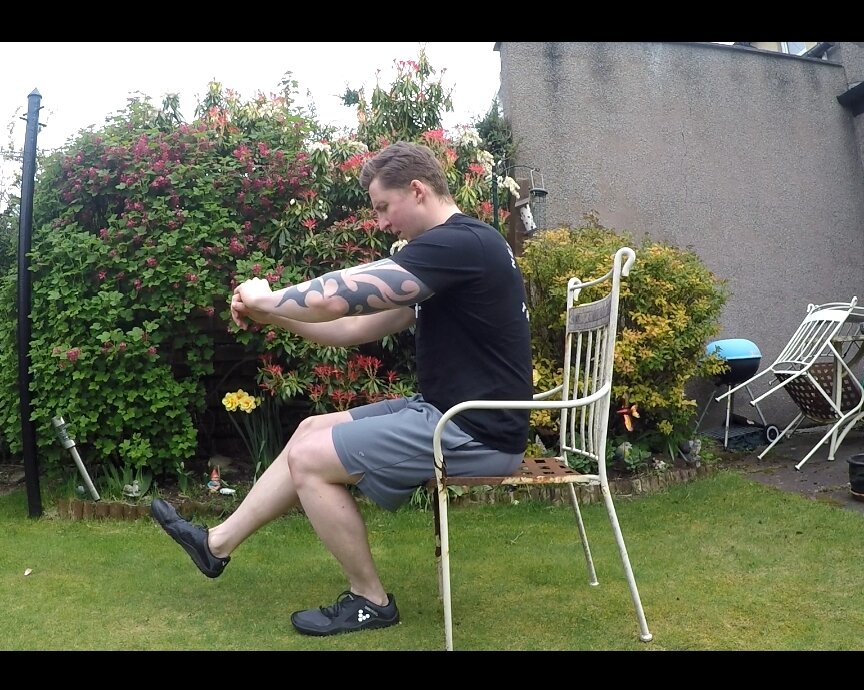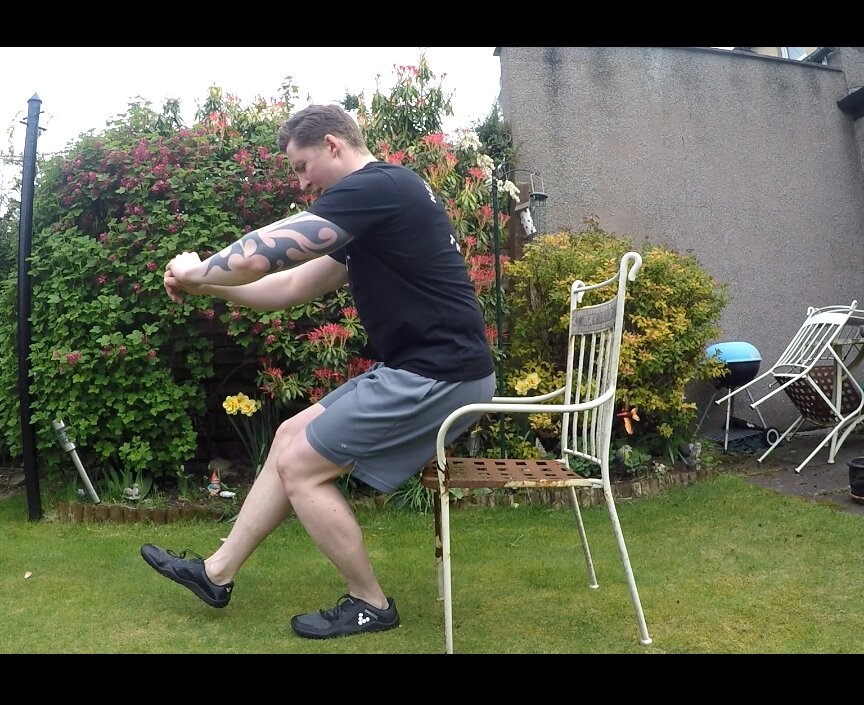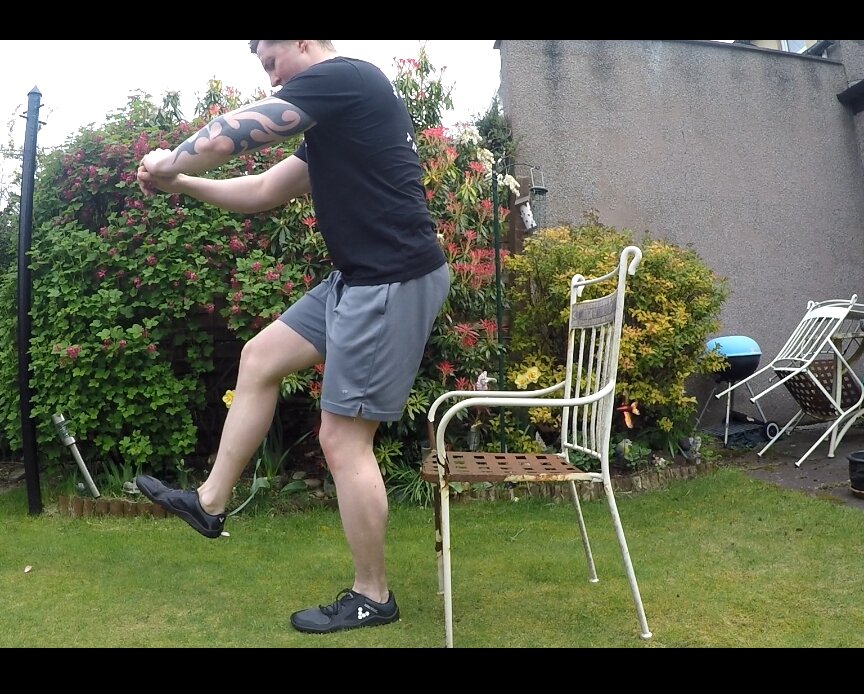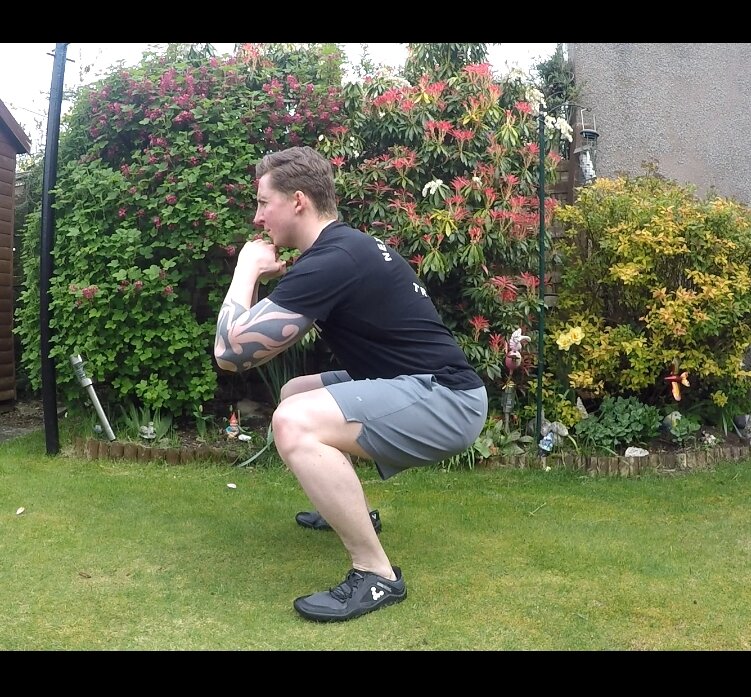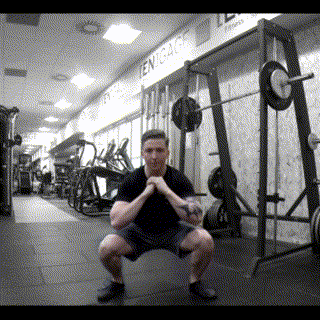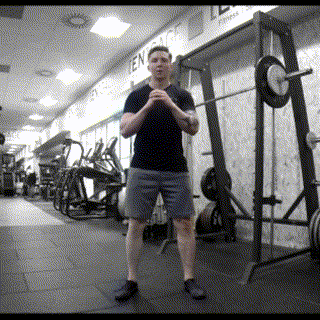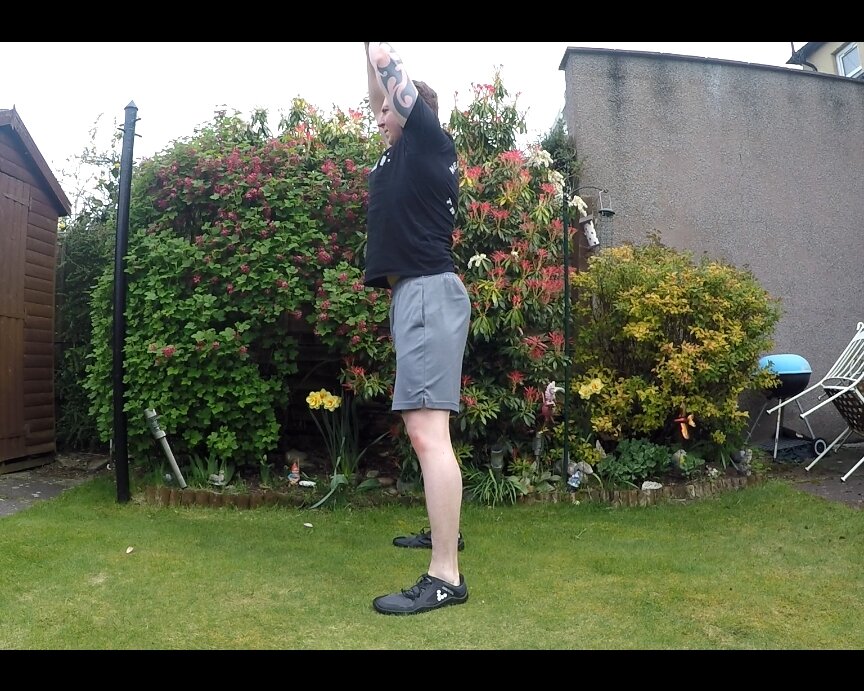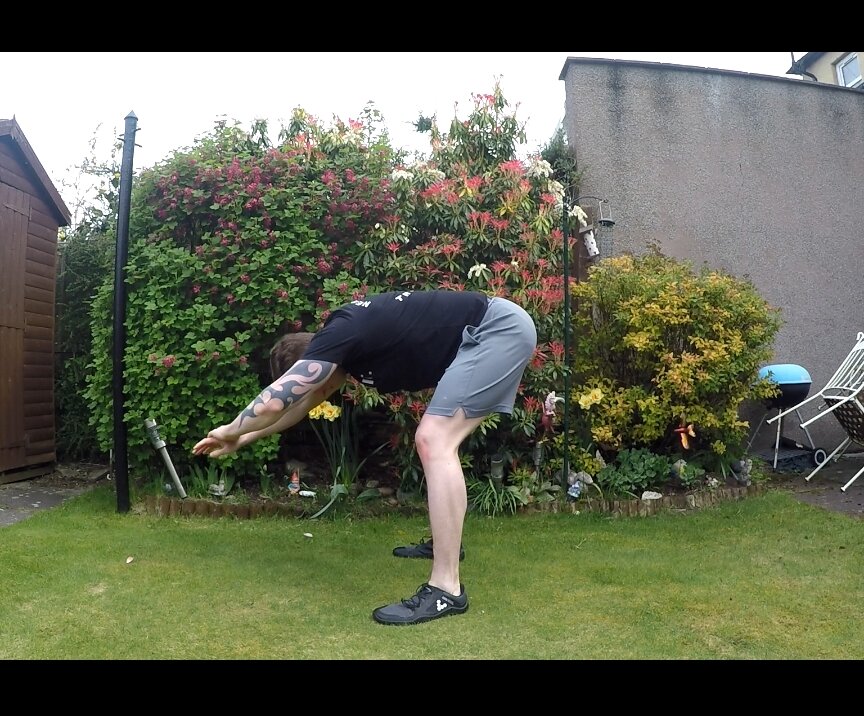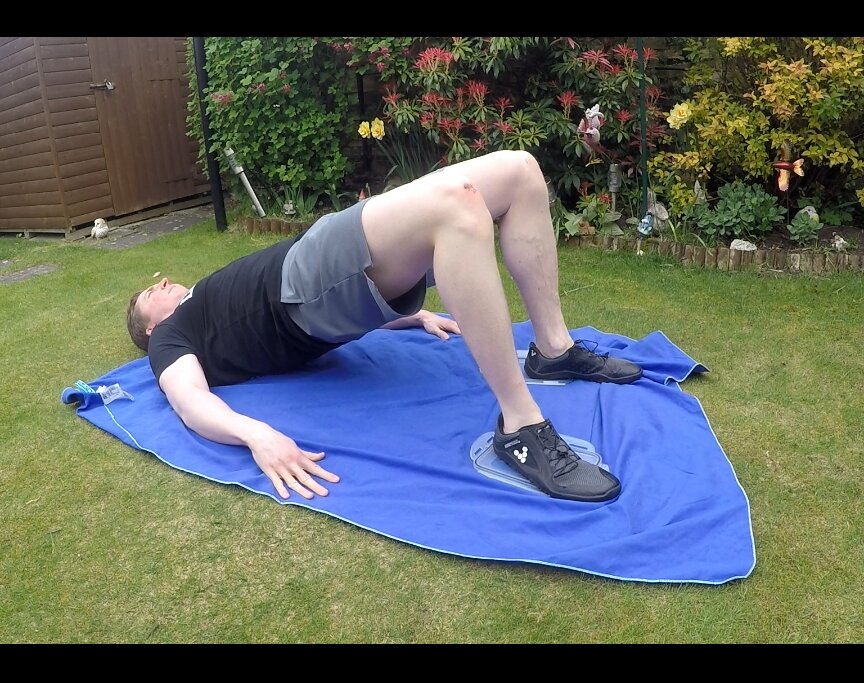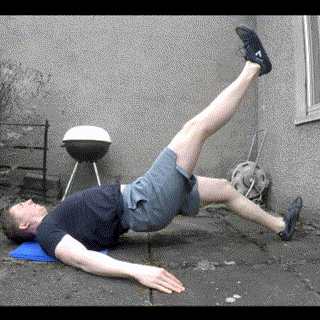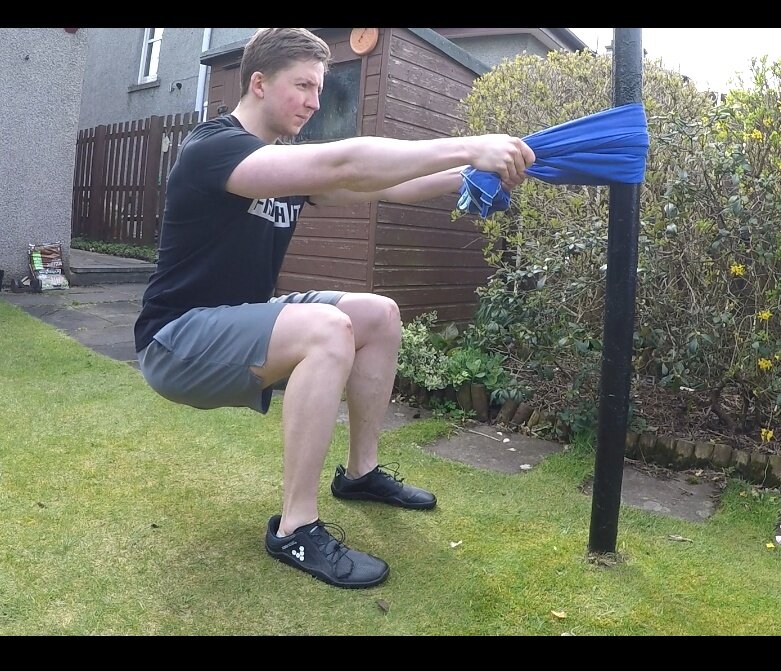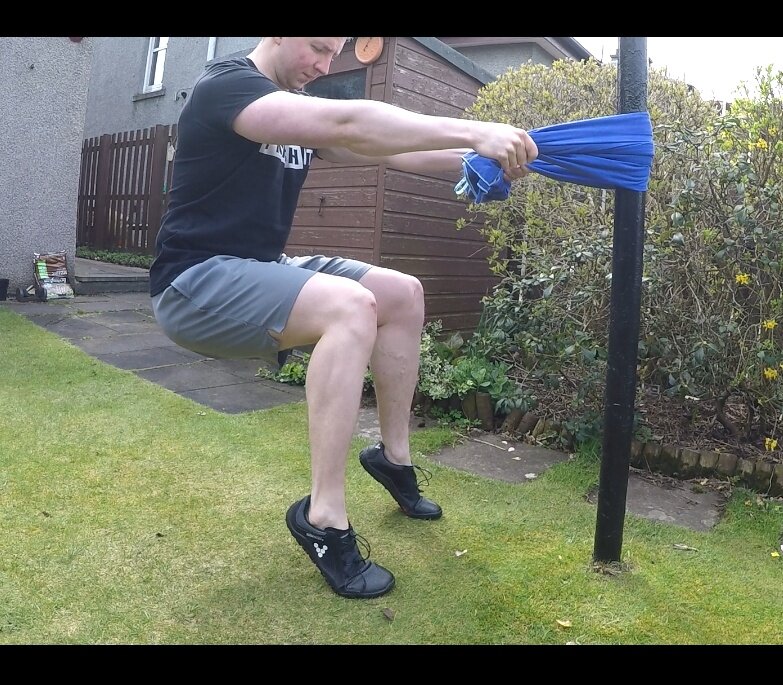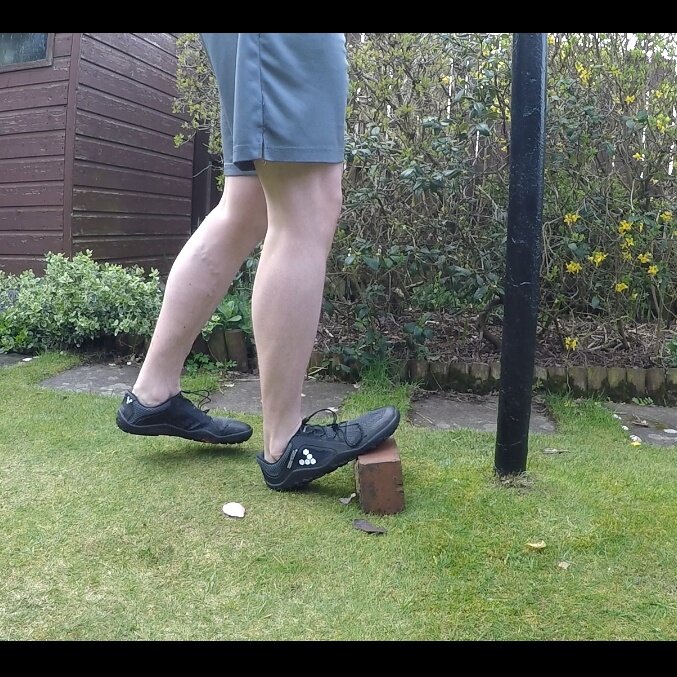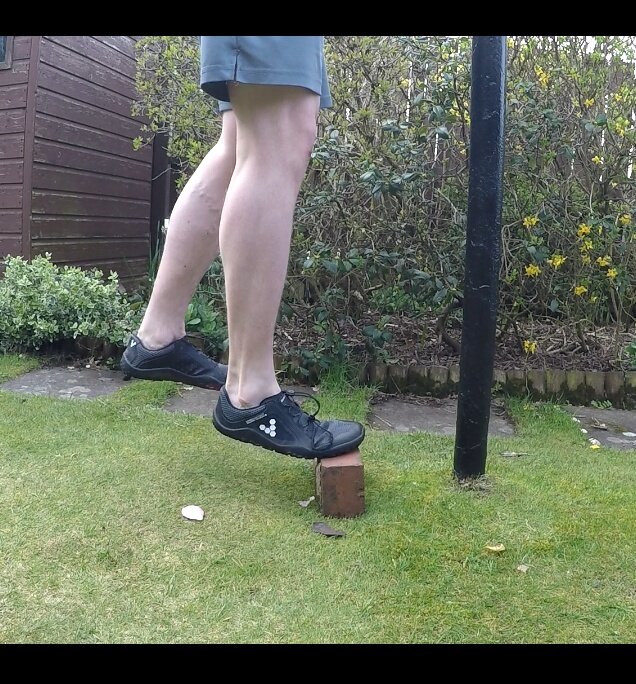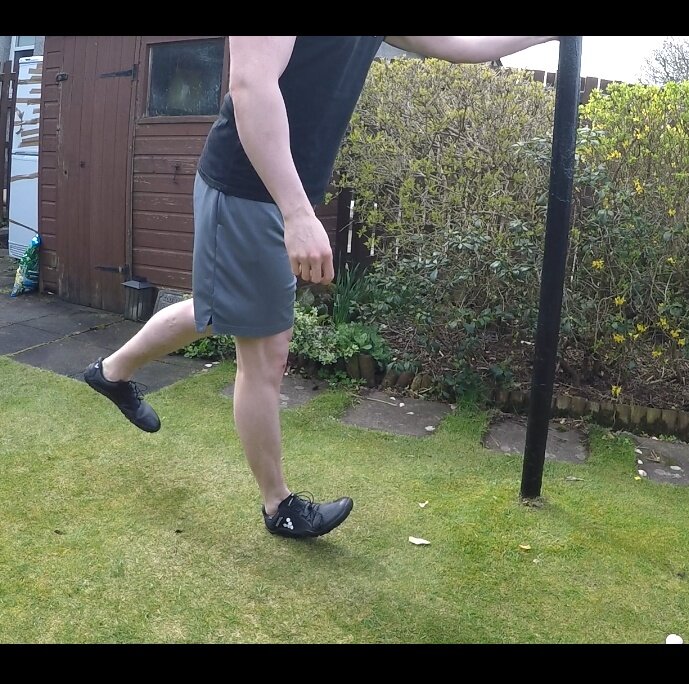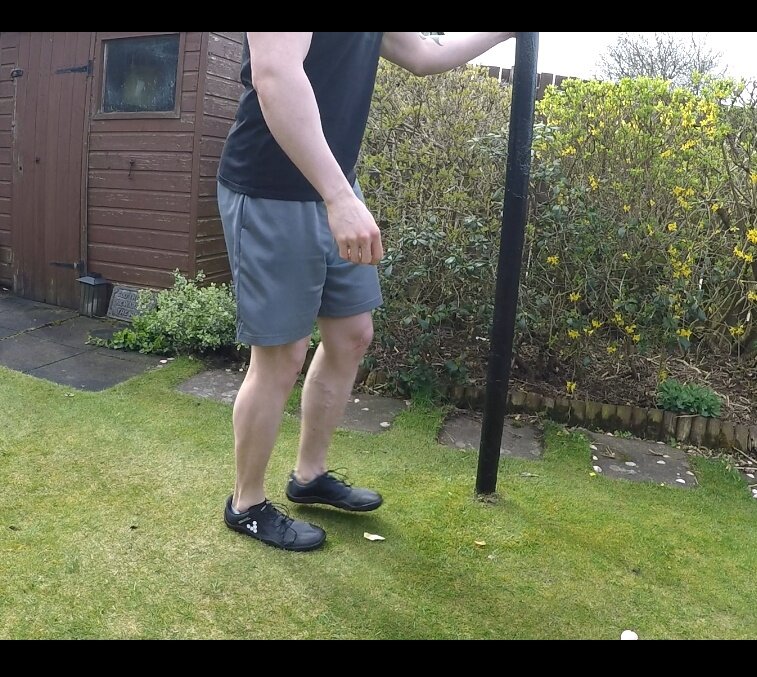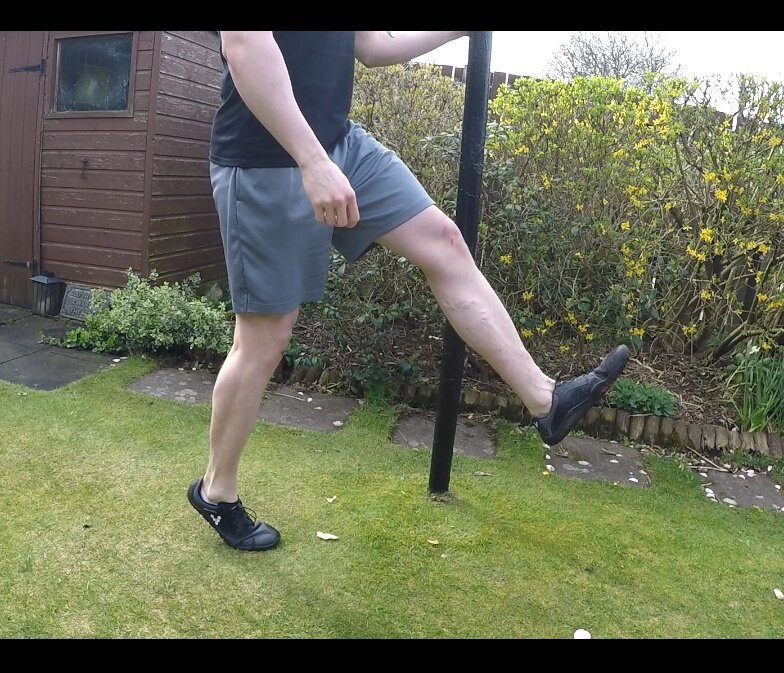For many people bodyweight exercises are the only at-hand option for training until the lockdown is lifted, which is a great opportunity to try something new and experiment with full body sessions. However, we might be missing the feel of torching one particular muscle group into oblivion - bodybuilding style - and without weights or bands we might be at a loss.
So today, let’s take a look at some ways to hit the body from different angles and ways they can be put together for some quick, yet punishing workouts until we can get our hands on the iron once more.
THE LAYOUT
This post will be organised as Workouts, Alternative Ways to Program and Progress, and the Exercise Bank at the end. This is because the exercise bank with pics and descriptions takes up a big chunk of space, and we might only be unfamiliar with a couple of exercises (instead of having to scroll through all 52 exercises before seeing the workouts and different ways to put them together).
The workouts will be made up of 3-4 muscle group specific exercises, and the exercise bank will have an additional 1-2 exercises that could be added on or subbed in for variety. There are more alternative exercises that can be utilised than the 4-6 per bodypart listed here, but I want to keep this post a manageable and easy-to-scroll-and-find-the-exercise length.
I’ve organised the Exercise Bank into categories (so chest exercises can be found in the chest section, etc), and the exercises within each category are in alphabetical order.
WARM UP
1 min jogging or jogging on spot
10 squats (start high and get lower with each rep)
10 walking lunges/on the spot lunges
30 secs shoulder circles
5 press ups
10 Russian Twists (5 reps to each side)
WORKOUTS BY BODYPART
For simplicity, each workout is 20 seconds per exercise with 30-60 seconds rest after a set is complete, and performing 3 sets total. This can be changed depending on individual ability (if it’s too difficult, do less time; and if it’s too easy, do a bit more time), or using the alternatives in the following chapter (Alternative Ways to Program and Progress).
ALTERNATIVE WAYS TO PROGRAM AND PROGRESS
For simplicity, each workout is 20 seconds per exercise with 30-60 seconds rest after a set is complete, and performing 3 sets total. However, this is not the only way to perform these workouts, we can also:
Instead of moving on to the next exercise we can take a quick rest (20-30 secs) and perform another 20 sec set of the same exercise, and repeat. So instead of 3 sets of Exercise A, Exercise B, Exercise C; we can do 3x Exercise A, 3x Exercise B, 3x Exercise C to complete the workout
Instead of time, we can focus on reps - so Exercise A for 10 reps, Exercise B for 10 reps, Exercise C 10 reps, and repeat. This allows us to adjust for easier/more challenging movements
Instead of time or reps, we can just go to failure (until you can do no more reps). This will hit the muscles even harder as they are worked until they can do no more. This can be combined with the first bulletpoint for a focused attack on the fibres (performing the workout as 3 sets per exercise instead of 3 full rounds for one set).
Add in extra holds. I like a good isometric hold to burn up the fibres at the end of a set, but there’s no reason we can’t add one after each exercise to up the intensity. Simply perform the previous exercise and hold the position in the middle of the movement, or a few inches away from the end range of motion (where it is challenging to hold), for a few seconds
Each week (or session), we want to be doing just a little more to keep challenging the muscles and forcing them to adapt and get stronger, and this can be achieved by adding either a little extra time to each exercise (5-15 seconds, or extra reps if you’re performing a set number of reps), an extra set (4 rounds or 4 sets) or adding in an extra exercise (from the exercise bank below or online from a reputable source).
EXERCISE BANK/ADDITIONAL EXERCISES
CHEST
Archer Press Up
Get into a wide grip press up position (hands far apart, arms and legs extended, body held straight, feet together), and start to descend towards one hand. Get as far down as you can, then extend the arm to press back towards the middle. Repeat on the opposite side.
By shifting the weight to one side and stretching the opposing arm (meaning it can offer less pressing power), the pressing side has to work harder than it would in a regular press up.
Ball Press Up
For this we’ll need a ball or another small, unstable surface. Get into a press up position with your hands on the ball, and bend your elbows to lower your body. When you are an inch or two away from the ball, extend your arms to return to the start position.
Decline Press Up
This is a press up, but the feet are elevated above head height. This changes the angle the arms are moving relative to the torso, and hitting the upper pec fibres and shoulders more than the regular press up (the bodyweight equivalent of an incline bench press).
Plyo Press Up
This is a press up with extra push - power through the pressing motion to leave the ground for a moment, and land gently on your hands.
Uneven Press Up
This is a press up, but one hand is elevated on a small surface (a brick or ball etc). Switch hands each rep.
Wide Press Up Hold
Here we get into a wide press up position (hands further apart than a regular press up, can be a few inches or a few hand spaces difference depending what feels the most comfortable).and begin to lower ourselves to the ground. When you are an inch or two away from faceplanting, pause and hover in the air for a few seconds - squeezing the muscles in an isometric contraction. Once the time is up, extend the arms to get back to the start position, ready to perform the next paused rep.
BACK
Bodyweight Pullover
Here we will need something stable to hold onto and space to stretch the legs. Lying on the ground with body extended and feet together, reach back and above your head to hold onto the stable object (I’ve gone for a washing pole here), and brace your core. Focus on pulling your elbows down and squeezing your lats to start lifting your body. Keep the core braced to maintain a straight body, and keep contracting your lats to bring your body up and point your toes to the sky (rotating on your upper back). Reverse the movement in a controlled manner for a smooth landing.
We can make this a bit easier by performing with a bent knee - similar to hanging leg raises, the extended leg spreads the weight further from the muscles moving it, and so makes it harder to move despite being the same weight.
Bodyweight Reverse Hyperextension
For this we’ll need a stable chair or table, or can be performed on the edge of a bed. Lying face down with hips and legs over the side (knees bent), squeeze your lower back and glutes to bring your legs up into the air as high as you can. Pause for a moment at the top, and lower your legs back down in a controlled manner.
Doorway Facepulls
For this we will need a doorway (I didn’t have one I could easily film from, so used a washing pole, one strong arm and some sick photoshop skillz). Standing in the doorway, place the back of your hands on the front of the door frame at about shoulder to neck level. Bracing the core and keeping your wrists extended against the doorway, start to extend the arms and lean back. Control the movement with your back muscles. Once you’ve straightened your arms out, squeeze your back muscles to return to the starting position.
Elbow Chest Raise (plus Hold)
Lying on your back, bring your arms out to about 45 degrees (halfway between down at sides and straight out horizontal), with pointing up towards the ceiling. Drive your elbows into the floor, squeezing your back muscles to bring your torso off the floor. Hold for a second, then lower yourself back to the floor.
For the hold, reach the top of the movement and squeeze your back muscles to hold yourself in the air.
PVC Bodyweight Row
For this we’ll need two stable chairs and a solid pole to hold onto (I’ve got a PVC pipe, but a broom or mop may be strong enough to work) or a stable overhanging surface, such as a table or counter top. Pop the pipe on top of the chair back rests, lie directly underneath the pipe and grab it with an overhand grip (palms down towards feet). Squeeze your back muscles and pull your elbows down to row your chest up to the pipe. Control your body down to a hanging position to complete one rep.
This can be made harder by extending the legs more to increase the length of the lever.
Straight Arm Pulldown (feet on sliders)
For these we will need some plastic lids and a surface they will slide on (carpet, towel on floor/grass, etc) or socks and a slidey floor. Pop the lids under your feet, and stretch your arms out in front of you, hands on the floor. Keeping the arms rigid (slight bend in elbow), dig your hands into the ground and contract your lats to pull your knees forward (think straight arm cable pulldown). Reverse the movement to return to the start position.
SHOULDERS
Angels and Devils
Lying on front with arms stretched out in front, contract back, glutes and hamstrings to bring knees and shoulders off the ground. Holding this position, swing arms out and behind you (as far as is comfortable) in a controlled manner and without touching the ground. Bring them back to the front in the same way and repeat - keeping back/glutes/hamstring contracted throughout exercise.
Bodyweight Fly
Get into a plank position (resting on forearms and toes, body held straight and off ground), and rotate your body to bring one arm up into the air (balancing on other forearm). Initiate and control the movement using your shoulder, not your obliques. Control body back to start position and repeat with opposite arm.
Isometric Push
Stand side on, about a foot away, from a wall or solid surface. Start to raise the arm closest to the surface, keeping the arm straight and slight bend in elbow (imagine a dumbbell fly). With about a 45 degree angle at shoulder, the back of your palm should be on the surface (if not, adjust where you are standing). From here, contract your shoulder muscles to push your palm into the surface as hard as you can for the prescribed time. Drop the hand down at the end, and repeat on opposite side. This can also be done in a doorway to perform both sides at once.
This creates an isometric contraction in the delts, forcing them to work hard as we are pushing as hard as we can against an immovable object.
Pike Press Ups
Similar to a press up, but in a pike position to put the focus onto the shoulders. Get into a pike position (arms and torso held straight, legs held straight, with about 90 degree bend in hips), and bend your elbows to bring your head towards the ground. Extend the arms to return to start position. This is tricky to do from the knees, but is easier to perform if knees are on an elevated surface (boxe, small foot stool etc).
Swimmers
Lying face down on the ground, arms stretched ahead, raise your head up to look forward and arms up off the ground. Squeeze your back and bring your elbows down to your sides, hands hovering just above ground, then back to an outstretched forward position.
Wall Handstand Press Ups
For this we’ll need a wall or a tall stable surface and some space (incase we need to bail). If you are comfortable getting into a wall handstand then do so, if you’re not so skilled (like me) get into a press up position with feet at the wall, and slowly walk your feet up the wall while walking your hands backwards. Once in position, use the wall to balance as you bend your elbows to lower yourself towards the ground. When you are a few inches away from faceplanting, extend the arms to return to the starting position.
We don’t need to be in a perfect handstand for this, as long as your feet are above your hips and your hips are above your shoulders we’ll be hitting the shoulders.
ARMS
Bodyweight Curl
For this we’ll need a chair or a stable table/overhanged surface. Lie down underneath the chair, placing hands on the seat and positioning your body so that the hands are at about eye level. Bend the knees to bring your feet up towards your butt, and plant them on the ground. Squeeze the biceps to curl your body up towards your hands, and lower yourself gently back down to the ground to complete a rep.
Depending on the height of what you are using, you may need to start by hanging in the air instead of lying on the ground. This can be made harder by extending your legs to create a longer lever.
Bodyweight Curl Hold
Similar to the Bodyweight Curl, but once we reach the top of the rep pause and hold this position for the prescribed amount of time, then extend your arms to complete the rep.
Chair Dips
Here we will need two sturdy chairs with solid back rests (no bendy computer chairs or something on wheels). Set the chairs either side of you, grab the tops and lift yourself straight up into the air. Lift your feet off the floor and bend the elbows to perform a dip - go as far as comfortable, but there is not much extra benefit to going past a 90 degree elbow bend. Extend the arms to return to the start position.
This can also be performed from the space in a kitchen corner - with hands on the counter instead of on chairs.
Planche Press Up
This is a press up with your hands turned to face the opposite direction (fingers pointing backwards). This brings your elbows closer to torso to put a bit more emphasis on the triceps/shoulders. This can be a bit tough on the wrists if you aren’t flexible, so be careful launching in.
PVC Bodyweight Curl
For this we’ll need two stable chairs and a solid pole to hold onto (I’ve got a PVC pipe, but a broom or mop may be strong enough to work) or a stable overhanging surface, such as a table or counter top. Pop the pipe on top of the chair back rests, lie directly underneath the pipe and grab it with an underhand grip (palms up towards head). Curl your head and body up towards the pipe - aiming to bring your head to the pipe (imagine a barbell bicep curl) to keep the focus on the biceps. Lower your body in a controlled manner to complete one rep.
This can be made harder by extending the legs more to increase the length of the lever.
Skullcrushers
For these we will need a sturdy chair/surface to hold onto. Hold onto the top of the surface, and step back until your body is at about a 45 degree angle to the floor (or you can feel the tension in the triceps holding you up). Bend the elbows to lower your head toward the surface, and once you are an inch or two away extend the arms to return to the start position.
This can be made harder by taking an extra step back and lowering yourself until your head is lower than the level of your hands. This can be made easier by taking less steps back, using a taller surface or performing from the knees.
Tricep Extension
Similar to a press up, but the hands are closer together (right under the shoulders) and we focus on keeping the elbows closer to the torso throughout the movement (keep them tucked in as if you were performing a dumbbell skullcrusher). This puts the pressure on the triceps to get us moving.
ABS
Alt Chair Tucks
Balancing on your butt with a chair in front of you, slowly extend your legs so your feet tuck under the chair, leaning back as you do so. Retract your feet, then extend your legs again, but this time so your feet hover above the seat of the chair to complete one rep.
This can be done without a chair, just need to use your imagination.
Ankle Taps
Lying on your back, bring your knees up to about 45 degrees with feet on the floor. Crunch your torso up slightly, and squeeze your obliques (side muscles) to twist and touch your hand to your ankle. Twist to touch the other side, and you’ve completed one rep.
Bicycle Crunches
Lying on back, have hands at side of head and legs out straight with feet held together a few inches off the ground. Bring left knee up towards head and crunch/twist upper body to bring right elbow to almost touch left knee (keeping right foot in the air). Return to start position and repeat with opposite elbow/knee (this completes one rep).
Hanging Knee Raises
Here we will need two sturdy chairs with solid back rests (no bendy computer chairs or something on wheels). Set the chairs either side of you, grab the tops and lift yourself straight up into the air. Bend the knees and squeeze the abs to pull your knees up towards your chest - lifting them as high as you can. Lower them back down in a controlled manner
Russian Twists
Sitting on the ground with feet on the floor (or held in the air if you want to make it more challenging), bring your torso to about 45 degrees (halfway between lying down and sitting upright) and twist to one side. Go as far as is comfortable, then twist to the other side to complete one rep. I’m holding a medicine ball here, but can be done without any weights/equipment.
Side Plank Dips
Get into a side plank position (balancing on one forearm and foot, on your side, with feet together and body held out straight), and gently dip your hips towards the ground. Squeeze your obliques to bring your hips back up and as high as you can.
GLUTES
Donkey Kicks
Hands and knees on the ground, torso held straight.Arc one foot up and behind your body as far as you can, keeping about a 90 degree bend in the knee and without twisting the torso. Return to the start position to complete one rep.
Fire Hydrants
On hands and knees, raise one knee up and out to the side while keeping the rest of your body in place. Maintain a 90 degree bend in the knee, raising it as high as you can without twisting your torso. Return to the start position to complete the rep.
High Hip Thrusts
This is a hip thrust or glute bridge with feet up on a high surface (bend at hips and then contract glutes to extend hip).
This can be made harder by performing as a single leg (with the opposite leg held in the air).
Mule Kicks
Hands and feet on the ground, lean forward and put your weight onto your hands. Kick you feet up into the air, bringing your weight onto your arms. Don’t need to hold them in the air or go too far forward (we’re not doing a handstand here), just forward enough to balance while your legs are up in the air. Land softly on your toes and get ready for another kick.
Scissors
Lying face down with feet together and legs fully extended. Raise your feet off the floor, separate your feet and swing your legs out to the side (like opening scissors), aiming to keep your feet and knees off the ground. Bring your feet back to the middle to complete one rep.
Single Leg Glute Bridges
These are glute bridges (lying on back, knees at 90 degrees, squeeze glutes to bring butt off floor) but done with one leg held straight and up in the air. Doesn’t need to be straight up like a submarine periscope, just off the floor.
QUADS
Crane lunges
Similar to a lunge, step forward (keep torso upright) into a lunge position, then push forward foot down as hard as you can to drive your knee up into the air. Land softly then return to start position and repeat with other leg.
Jumping Lunges
Take a step forward to assume a lunging position (torso upright, front leg has about 90 degree bend in knee, rear leg also has about a 90 degree bend in the knee with the rear knee hovering an inch or two off the ground. Explosively extend your legs to jump up into the air, switch legs (rear leg comes forward, front leg goes behind), and land gently in a lunging position (albeit with legs switched around), ready to jump into the next rep.
Single Leg Box Squat
For this we will need a chair or a stable box/table. Sit on the chair/box so that your butt is on the edge of the set. Bring one foot off the floor, and stand up using one leg. Balancing on one leg, slowly sit back down onto the chair/box to complete one rep.
Squat Hold
Drop into a squat position (feet shoulder width apart, torso upright and slightly forward, sitting your butt back and dropping your hips low enough to be in line with you knees - or as low as is comfortable) and hold for as long as you can. If you need to stand up before the time is complete, shake the legs off and get back into the position. Repeat as many times as is necessary.
Squat Jacks
Combining the squat and jumping jack, perform a squat (legs shoulder width apart, sit back, bring hips down until they’re parallel with knees before standing back up), then jump up, bringing the feet together as you land. Jump up again, bringing the feet out into a squat stance and perform another squat.
Squat Jumps
Feet shoulder width apart, drop into a squat and as your coming back up power through into a jump. This can be a tuck jump (bring knees up towards chest) if you’re feeling energetic, but as long as your feet leave the ground we’ll count it. Land softly on your feet, and repeat.
HAMSTRINGS
Bodyweight Good Mornings
Stand with feet wider than hip width apart and stretch your arms up overhead. Bend at the hip and knees to bring your butt back and angle your torso down - keeping arms held straight. Bring your butt back as far as you can, then squeeze the glutes and hamstrings to bring it forward and raise your torso back up.
By holding a weight in the hands (a bag with bottles of water in it for example) we can make the exercise harder.
Hamstring Curl (with sliders)
For this we will need some plastic lids, a surface for them to slide on (carpet, towel on the ground etc) or socks and a slidey floor. Lying on your back, place your feet on the lids and assume a bridge position (balancing on upper back, squeeze the glutes to bring your butt off the floor, knees at about 90 degrees). Slide your feet away from your body, extending your legs while squeezing the glutes to hold your butt up. Slide your feet as far as you can without letting your butt touch the floor, then contract your hamstrings to bend your knees, bringing your feet back you towards your torso to complete one rep.
Long Leg March
Lying on your back, squeeze your back, glutes and hamstrings to bring your butt off the ground (balancing on upper back and heels, arms out by side on the ground). While holding this arched position, raise one foot into the air and hold for 15 seconds. Swap feet and repeat for 15 seconds.
Single Leg Long March Hold
This is a long leg march, but holding the top position (leg in air). This can be made easier by performing a hold with both feet on the ground.
Single Leg Stiff Leg Deadlift (SLSLDL)
Standing up, have a slight bend in the knees and begin to bend forward at the hips and raise one foot off the ground behind you. Balancing on one leg (keep this one rigid throughout), keep your torso and rear leg in alignment as you bend forward - imagine a seesaw with your standing leg as the pivot point. Reach forward with one hand (the one opposite to the leg in the air) and try to touch the ground, keeping your torso and rear leg in as near a straight line as you can. Return to the start position and repeat with opposite leg.
CALVES
Bent Knee Calf Raise
Here we are performing a calf raise, but with a bent knee. This can be a bit tricky to get into position for as we want to be holding a stable surface to balance - I’ve opted to use a towel to extend my reach and maintain balance. With the knee bent at 90 degrees, perform calf raises.
Having the knee bent to 90 degrees will mean the soleus muscle of the calves will work more than the gastrocnemius (which is the dominant muscle in standing calf raises, and so gets the most work).
Calf Raises (on Step)
Balance on a raised surface (such as a step or a brick) with your heels over the edge. Balance on one foot (hold something for extra stability) and lower your body by dropping your heel. Pause for a moment, then squeeze the calf muscles to bring the heel up as far as you can - trying to get on your tiptoes.
The pause is the most important thing here, if we just bounce we’re using the elastic energy from the tendon. This is a great energy saver for running, but for building muscle we’re wanting to force the muscle to work as hard as possible.
Calf Raise Hold
This is a calf raise, but hold the top position (on tip toes or as close as you can get) for the prescribed time.
Calf Rocks
Standing with something solid to hold onto, gently swing one leg back and forth. As you swing one leg forward, come up on your tiptoes on the standing foot, and as the swing foot swings back, rock the standing foot back and bring your toes up off the floor to complete one rep.






